SHARING THE CYCLE LANE WITH SERVICES

TOP 10 SUSTAINABLE CITIES
























































TOP 10 SUSTAINABLE CITIES






















































We produce Digital Content for Digital People across 20+ Global Brands, reaching over 15M Executives
Digital Magazines
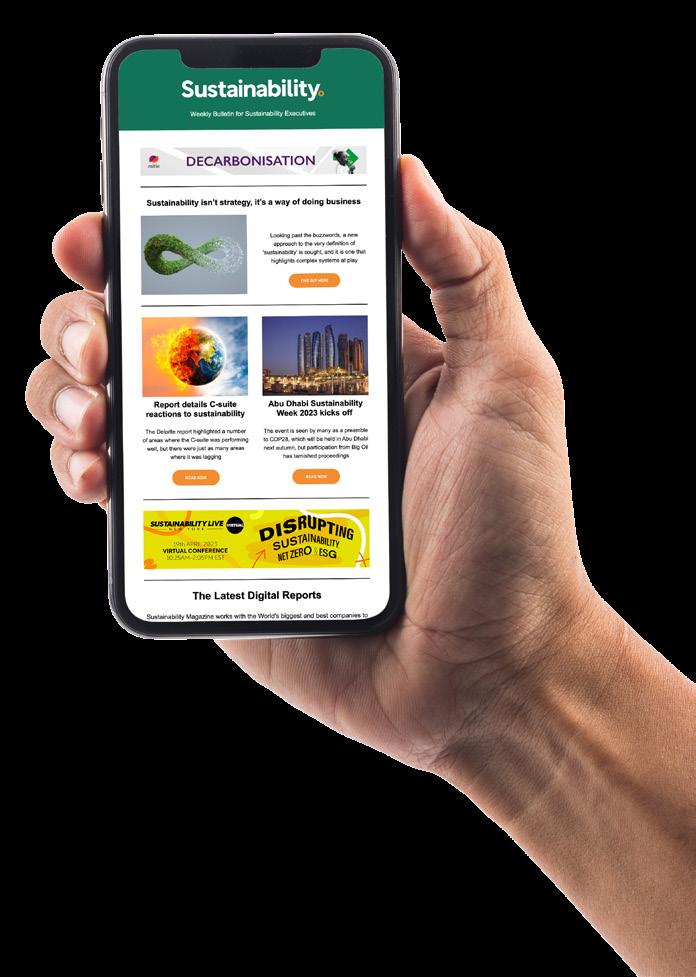





Websites
Newsletters
Industry Data & Demand Generation


Webinars: Creation & Promotion
White Papers & Research Reports
Lists: Top 10s & Top 100s
Events: Virtual & In-Person
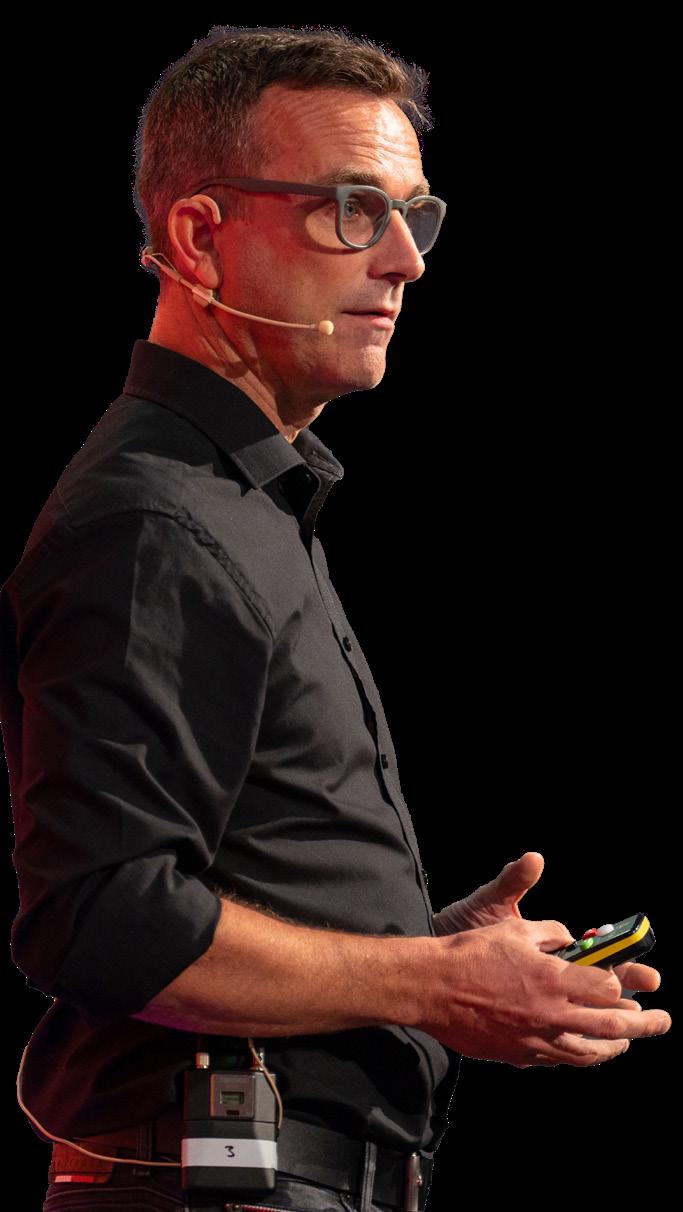



Work with us

CATCH THE LATEST UPDATES AND RECEIVE EV NEW INSIGHTS
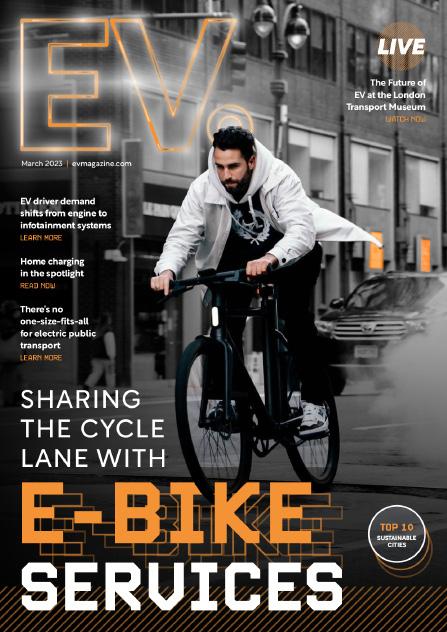
EDITOR-IN-CHIEF
TOM SWALLOW MANAGING EDITOR NEIL PERRY CONTENT OFFICER SCOTT BIRCH DESIGN OFFICER MATT JOHNSON GRAPHIC DESIGNER SAM HUBBARD PRODUCTION MANAGER KIERAN WAITE PROJECT DIRECTOR THOMAS LIVERMORE MARKETING MANAGER KAYLEIGH SHOOTER CEO GLEN WHITE CHIEF CHIEF VIDEOCharging is the trend of this year and alleviating—as Sam Clarke explained at EV Magazine LIVE—‘EV bashing’. It’s occurred to me that, despite all the good news out there in the big wide world, around electrification and the climate benefits, there are also many individuals that still oppose the idea.

Petrol heads, anti-passenger vehicles, and public transport advocates are yet
to understand how all sustainable solutions—whether electric, hydrogen, or hybrid—can work together.
Shared mobility is changing the way commuters ride to work, but e-scooter and bike share schemes are seen to have a place alongside that of private bicycles. When we look at charging, it’s apparent that there is more effort to be made to ensure accessibility to charging in order to encourage more consumers to buy, rent, or lease electric cars. And the need for zero-emission public transport remains.
The question, you may ask, is “how will all of this come together?” Needless to say, the mindset shift continues.
TOM SWALLOW EDITOR-IN-CHIEF tom.swallow@bizclikmedia.com



040 EVENT REVIEW
EV LIVE: The Future of EV at the London Transport Museum
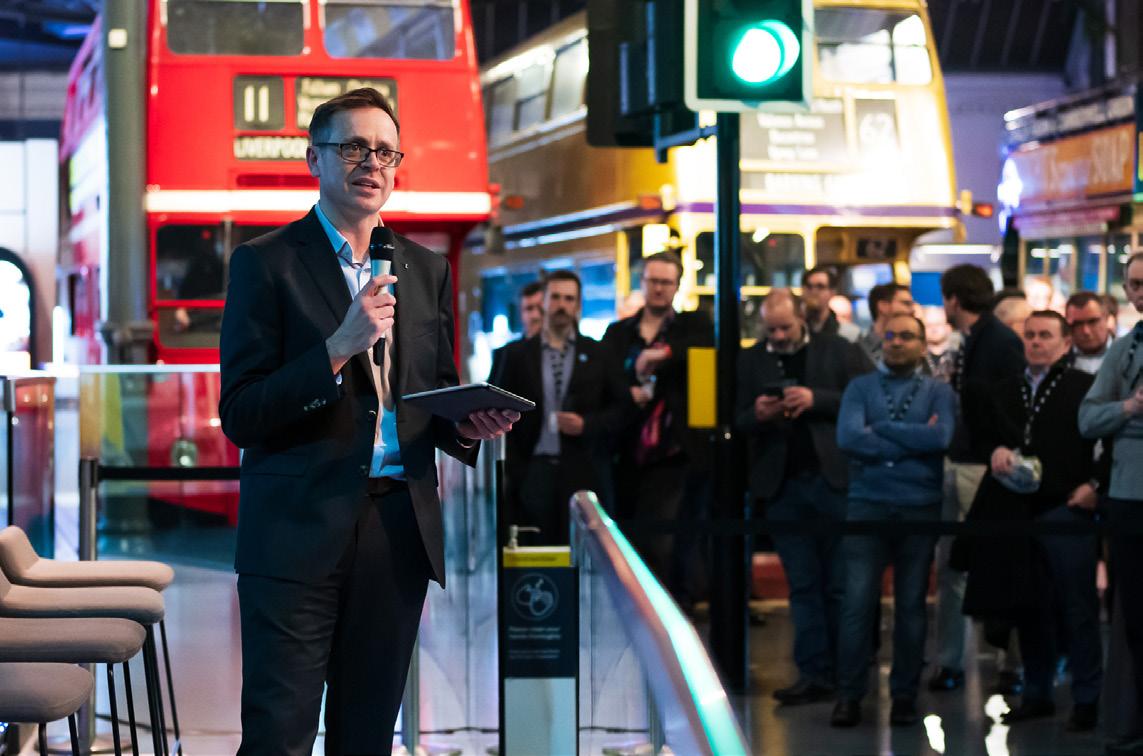
052 CONNECTED CAR
EV driver demand shifts from engine to infotainment systems
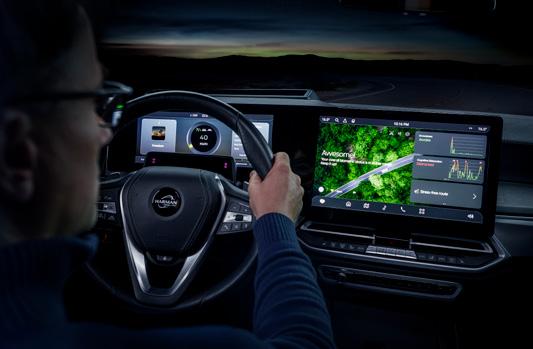
060 CHARGING & INFRASTRUCTURE
Home charging in the spotlight
068 FLEET & COMMERCIAL
There’s no one-size-fits-all for electric public transport

076 MOBILITY
Will e-bikes supersede their human-powered counterparts?


086 TOP TEN
Cities at the forefront of sustainable urban mobility

024 AEHRA
Automobile’s rule-defying ultra-premium EV escapades
Before long, cities will have evolved from urban jungles to smart cities of the future.

Although the vision of a connected city may consist of futuristic architecture and digital disparity, the aim is to create an area where the population can thrive and the planet prosper.
Electrification is bringing about many changes in this area, particularly when mobility is such a critical component of modern day life. But what does the smart city of the future actually look like? We imagine a world where data brings people closer together in an environment that is safer, cleaner, and more productive than ever before.

general trend we’re seeing at the moment is EV drivers trying to use their cars like they would a petrol or diesel one. But this way of thinking is outdated and causing frustration among car owners, alongside range anxiety and ‘charge rage’.
In the days of EV dominance to come, drivers won’t leave it until the last minute to charge their car for a longer journey— nor will they resist the urge to stop for a break on a long-haul trip.
The new approach to powering a car is what we like to call ‘opportunity charging’.

While it’s not a term coined by the EV industry, its principles do apply to an electrified road network. The original use of this charging method is already established among warehouse operators and other industrial operators, whereby their forklifts, pallet trucks, and other machines are left to charge at every opportunity.
During a break, lunch or overnight, machines are left charging to ensure they are fully operational the next day.
A similar approach is likely to be adopted by the wider EV community as more and more individuals seek to integrate electrified vehicles into their lives. Drivers will either charge at home or make use of opportunities such as parking at the gym or at work to guarantee enough charge to continue along their list of errands and activities.
This is where infrastructure plays a huge role. Although charging networks are increasing rapidly, charging companies must prioritise areas where customers are likely to leave their car to charge for indeterminate periods.

Public transport networks across the globe are already leveraging this kind of solution with the use of overhead charging infrastructure to power public buses when they are stagnant.
At Birmingham Airport in the UK, plans were set in motion in 2019 to install charging masts that deliver 300kW of power to 200kWh batteries in Volvo 7900e electric coaches. Such an opportunity comes from the use of space and will provide the airport with transfers that can operate on a 24/7 basis.
FIAT 500E:
As the leading EV in the European market in 2022, the Fiat 500e represents a triumphant change that tops sales from highly desirable brand Tesla

Last year, we heard the news that Tesla’s European sales figures were topped by a small, yet mighty, EV—the Fiat 500e. If you’ve driven the ICE model of the Fiat 500, you’ll know that it’s a humble car with Italian heritage, but the electrified model builds upon the iconic design with attributes of technical revolution and electrification throughout.



Stellantis has pushed itself to a significant position in the EV market thanks to this car, which is a more than beneficial vehicle for commuters and city drivers. Achieving a real-world range of around 169 miles (WLTP 199 miles) per charge and sporting a 42kWh battery, the Fiat 500e provides more than enough range for the average commute or a trip to the shops at the weekend.
However, those experiencing the dreaded ‘range anxiety’ need not worry, as the car caters for its low mileage—in comparison to larger vehicles on the market—via various modes that conserve energy or get you out of a muddle if you forget to charge. Range
mode reduces power while increasing regenerative braking to make each charge last longer.
Known in Italy as the ‘Cinquecento’, the Fiat 500 holds a special place as an Italian heritage city car. The first model, designed by Dante Giacosa, was unveiled to the public in 1957 and in manufacture until 1975.
The 21st Century models weren’t the only ones to receive alteration to their drivetrains; the first Fiat 500 had its engine mounted in the rear, making it a compact, nimble car for town driving.

Throughout its history, the 500 has undergone many facelift operations and had attributes changed, including its suicide doors—doors hinged at the rear rather than the front, almost unheard of in modern cars— and increased size of the vehicle.
For the forgetful drivers, the 500e also has a Sherpa mode, which reduces power even more so that you’re not left stranded by the roadside.
The interior of the car gives drivers more of a premium feel, and they can enjoy the silence of the electric motor, which is far from the petrol-powered grumble of the old model.
As one of the industry giants, Stellantis is all-in on electrification, so the company is working hard to continuously develop its EV technologies. From this, the company announced that all vehicles will be built upon one of its four game-changing EV platforms: STLA Small, STLA Medium, STLA Large, STLA Frame.
The company’s electrification strategy has brought great success to Fiat. But, if you’re (still) deterred by the range of the Fiat 500e, rest assured the company is working hard to enhance the experience, with its smallest BEV platform in its range set to reach 300 miles per charge.


Throughout this month, we’re highlighting some of the great women in business—particularly those that work to improve how countries electrify mobility
Jordan Brompton, Co-Founder and CMO of myenergi, co-founded the company in 2016 alongside her business partner Lee Sutton. Her day-to-day role as CMO involves directing the sales and marketing departments, leading business development, and driving corporate partnerships.
Ultimately, Brompton is the driving force behind myenergi’s goal of becoming a globally-acclaimed brand, renowned for a range of first-to-market products that pave the way towards a more sustainable future.
The EV and energy sector is still primarily male-dominated, but with a rising number of hugely talented female leaders. Juliet Davenport at Good Energy, Avril PalmerBaunack at BCA and Fiona Howarth at Octopus Electric Vehicles are just a few examples of inspiring women leading highly successful companies and changing the face of the sector for the better.
I’d like to think that myenergi is also helping to buck the trend, when it comes to female representation. As we’ve continued to expand, the business has appointed some of the most exceptionally talented female team members I’ve ever met. By doing things differently and pushing back against the status quo, we’ve moved mountains and created the fabulous brand we enjoy today.
As a woman in a male-dominated industry, I’ve often found myself having to work twice as hard to build credibility and earn the respect of some of my male counterparts (Taylor Swift sums it up pretty perfectly in her song, ‘The Man’). Building a business from the ground up is difficult, made even more challenging by having to break the glass ceiling.
Although the EV and energy sectors are seen as forward-thinking, progressive, world-leading industries, they’re still


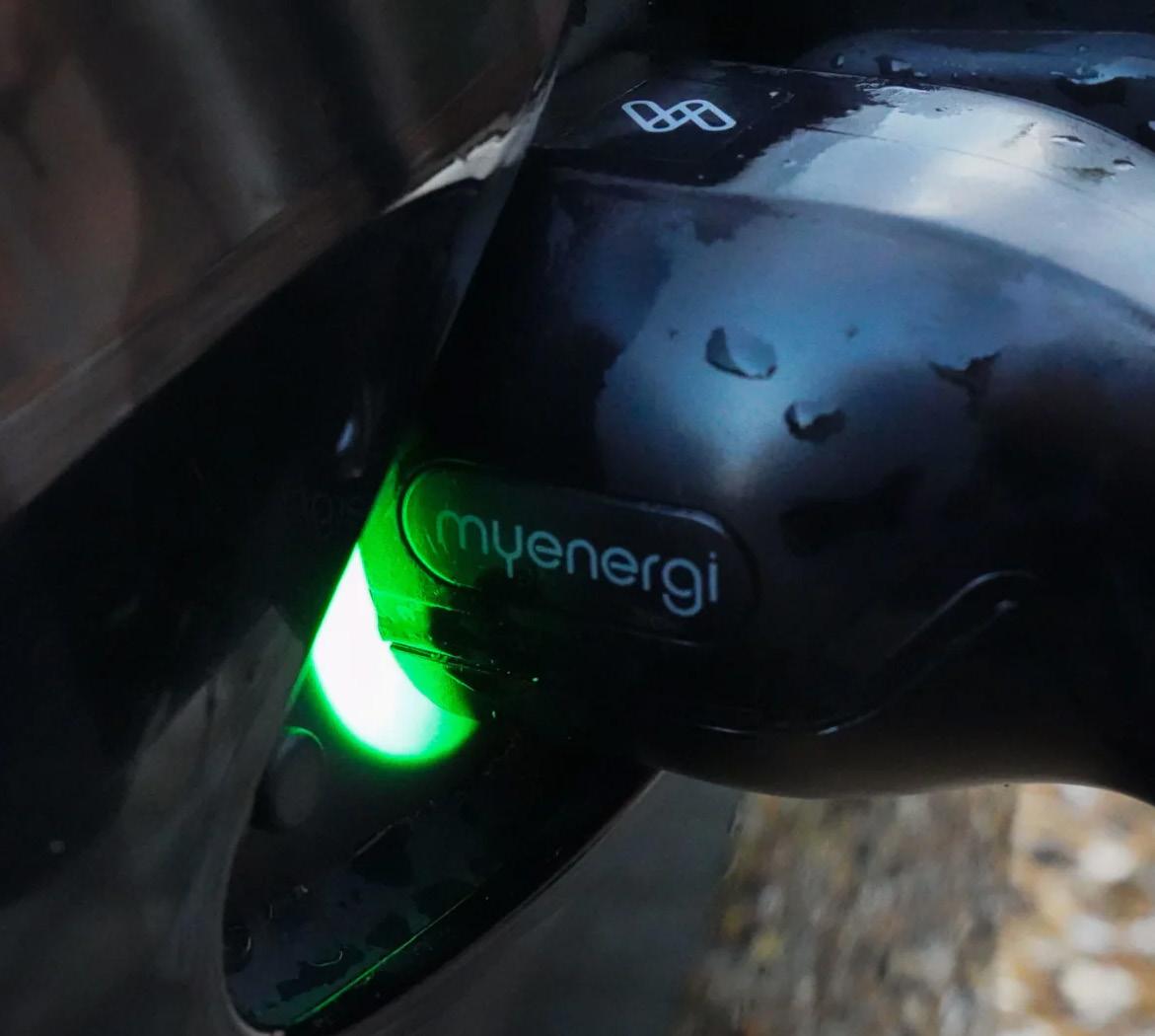


"I’D LIKE TO BE REMEMBERED AS PART OF THE SOLUTION, NOT PART OF THE PROBLEM"
underrepresented. Bias remains, and I believe that the status quo is holding us back.
How did your experiences as a woman in business prompt the founding of myenergi? Has your story shaped inclusivity within the company?
Surely, in a world where equality is talked about so much, we shouldn’t have to worry about bias, injustice and prejudice? Unfortunately, the reality is very different. This is a conversation that needs to be talked about.

When I started myenergi in 2016, I was immediately judged—a female marketeer ‘helping out’ with a start-up business. I wasn’t taken seriously. I’d love to say that I simply laughed it off, but I was frustrated and it led me to doubt myself. It really shocked me that I had to fight just to be seen on a level playing field. One thing I feel as a woman is that you have to work that little bit harder just to get respected.
I made a promise to myself. I wanted to champion the women who had experienced similar situations. The pioneers who were battling against an invisible wall. Everyone who had ever felt like they were gender stereotyped.
At myenergi, we’re trying to buck the trend. We prioritise inclusivity and want to be known as a business that is pushing hard to make a difference. We want to be seen as an enabler—this is critical to building a global business that really cares, believes in, and wholeheartedly supports its workforce.

Imagine a gender equal world, free of stereotypes and discrimination, that is diverse, equitable, and inclusive; a world where difference is valued and celebrated. In this world, from a business perspective, companies would perform better, retention rates would dramatically improve, and staff satisfaction would be far higher.
But inclusivity isn’t a challenge facing just one sector or simply the business community alone. It’s an issue impacting all areas of our lives, one that we need to come together and tackle collectively—in our communities, in our workplaces, in our schools, colleges and our universities.
It means confronting gender bias, discrimination, and stereotyping every time you see it. This isn’t an ask for the small few;
it’s a clarion call for global change. Collectively, we have the power to do something different and change the future. Progress is key and working together is the only way to achieve it.
Leaders have a driving role to play in supporting inclusivity. Being aware of unconscious bias is important, but so is managing it. Leaders must promote pay quality, embrace progressive training programmes, make participation easier, let voices be heard, promote flexible working, celebrate individuals and diversify the workforce. Listening, tracking progress and rewarding success is key.
I’d like to think that my legacy will be helping to leave the planet in a better position than how I found it, creating new and innovative solutions that get people excited about reducing their carbon footprint. The world isn’t ours—we’re simply looking after it for generations to come.
I’d like to be remembered as part of the solution, not part of the problem. As a business, our game-changing tech is helping to address sustainability, and I’d like for it to feature in homes all over the world. My vision is for myenergi to become a household name, renowned for accelerating the transition towards a better future.
It’s not just about selling products, but changing opinions and inspiring the next generation. I’ve already published a book about renewable energy and sustainability to help children understand the importance of sustainability (Sparki & The Journey To Earth). It might not be much, but I’d like to think it’s one small jigsaw piece in a much bigger puzzle.
"IT’S NOT JUST ABOUT SELLING PRODUCTS, BUT CHANGING OPINIONS AND INSPIRING THE NEXT GENERATION"
DUE TO THE RISK OF INJURY IN URBAN AREAS— PARTICULARLY AT NON-HIGHWAY SPEEDS—CARS WERE GOING TO MAKE NOISE TO ALLOW PEDESTRIANS TO HEAR THEM.
WHILE REGULATORS HAVE BEEN BACK AND FORTH ON THESE REGULATIONS, WE EXPECT THAT EVs WILL NEED SOME FORM OF NOISE WHEN DRIVING AT LOW SPEEDS, WHICH COULD BE TREACHEROUS FOR MEMBERS OF THE PUBLIC WHO ARE BLIND OR VISUALLY-IMPAIRED.
WHILE COMPANIES ARE WORKING ON THIS, DRIVERS CAN ACTUALLY PROGRAMME SOUNDS INTO THEIR CARS: THE EV PLATFORM REMOVES LIMITATIONS ON THE TYPE OF NOISE A CAR MAKES.

“THE AUTOMOTIVE INDUSTRY IS BEING REDEFINED BY A SOFTWARE-DRIVEN TRANSFORMATION”
ALEXANDRE AUDOIN, HEAD OF GLOBAL AUTOMOTIVE, CAPGEMINI
The idea of commuting using personal electric scooters is growing fast, but many countries are yet to accept them as a suitable option for use among the public. These countries allow you to own and ride a scooter, although some prefer you buy from a reputable company.
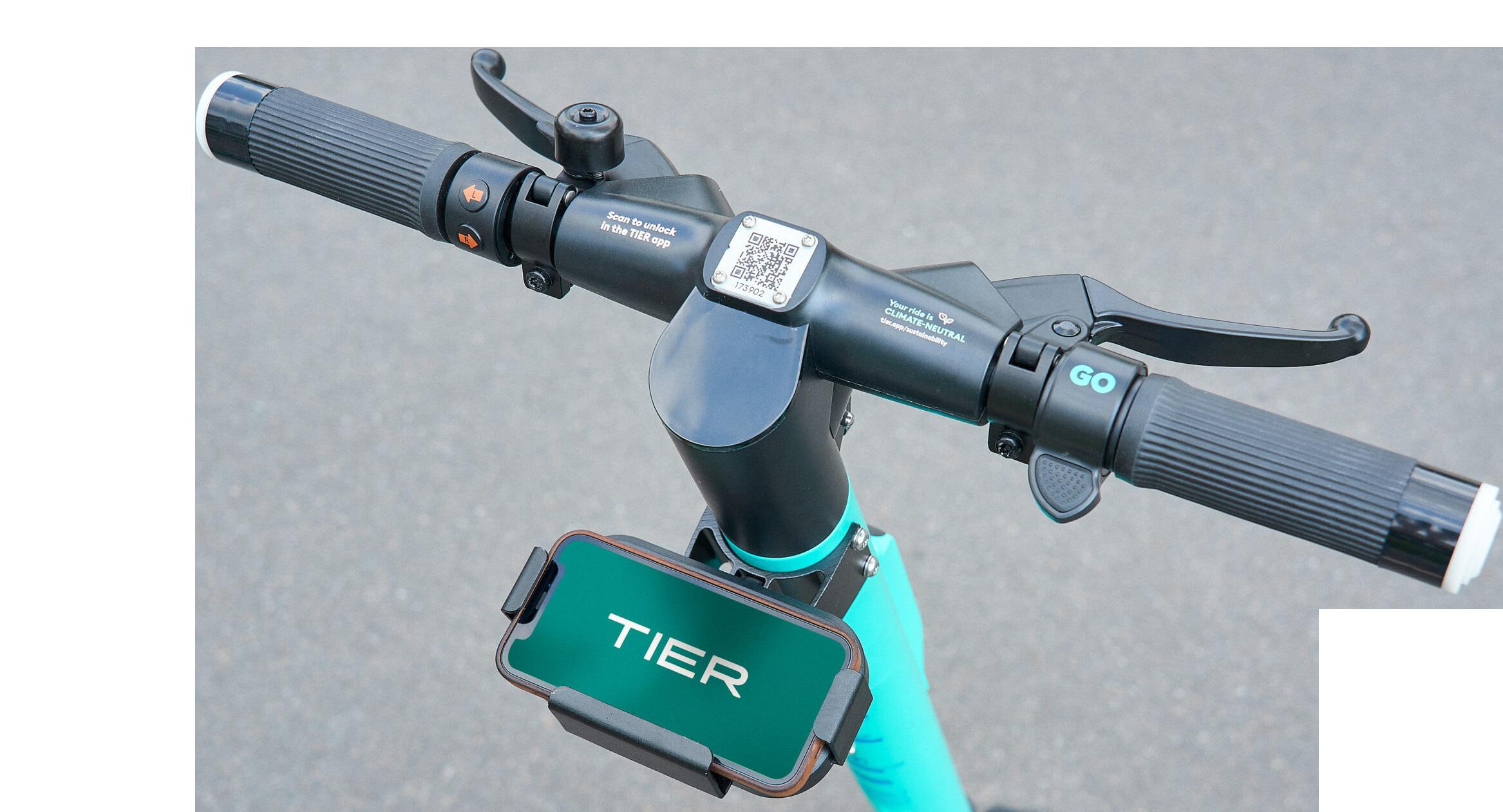

“IF YOU OWN A CAR, YOU WANT TO HAVE FREEDOM. YOU WANT TO BE ABLE TO GO ANYWHERE YOU WOULD LIKE”
ROMBOUT HEESTERMAN, LEAD PRODUCT MANAGER, EVBOX
According to McKinsey, the EV battery market is expected to grow 20% year-on-year. But, with some countries lagging behind in production, it’s uncertain if they'll make the number required.
Job creation is also an important factor, as the industry’s success determines a larger number of jobs globally. McKinsey estimates that an extra 30 to 40GWh of production capacity could create 3,200 new jobs.

“WE THINK THAT PEDAL BIKES WILL CONTINUE TO BE A CRITICAL PART OF THE SYSTEM”
LAURA FOX, GENERAL MANAGER, CITI BIKE, LYFT BIKES AND SCOOTERS
The human-machine interface (HMI) is the centre console of every car—the feature that drivers interact with the most aside from the steering. But why is HMI such an important factor of electrification?

Automotive developers see fewer differentiating factors, leading technology firms to enter the industry with the right strategy in place, resulting in cars needing to adhere to the digital ecosystem and connect with the devices around them.
As a result, car companies are enabling more digital features in their cars and, due to the nature of the electrical systems within an EV, there is a lot more space to get creative with a digital interface.
First, we had satellite navigation systems installed; now we have interactive displays that can show personalised data and leverage other ecosystems to create a seamless user experience. It’s safe to say that many cars are for the passenger, as well as the driver.
Aside from the technical advancement of the digital display, Volvo is also developing solutions to keep drivers safe while in the car, giving the vehicle response mechanisms to support the user when they lack concentration.
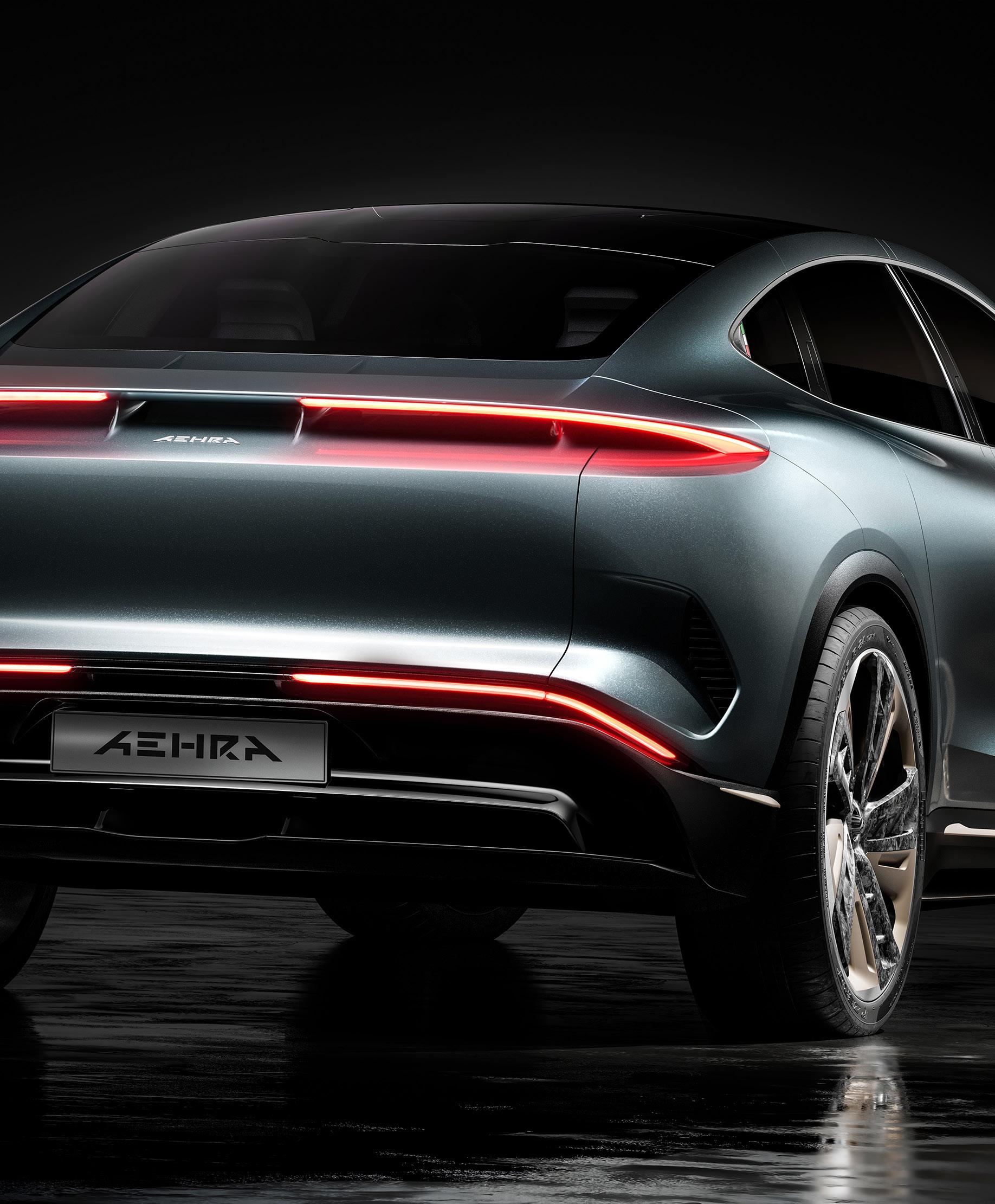
 WRITTEN BY: TOM SWALLOW
WRITTEN BY: TOM SWALLOW
PRODUCED BY:
THOMAS LIVERMOREA groundbreaking automotive business, AEHRA’s Co-Founder and CEO, Hazim Nada, talks of the EV vision, strategy, and the SUV’s sustainable credentials
Since the mid-20th century, automotive has evolved around the chief component powering mobility—the engine. As the internal combustion engine
(ICE) came to fruition, more and more car manufacturers centred their efforts around it to improve performance, increase fuel efficiency, and even to refine their engine sounds, appealing to the fast-driving, thrillseeking car buyers out there.
When it comes to car design, the general trend—particularly among high-end, supercar builders—is the elongated front end to house ever-growing engines, alongside other petrol and diesel components.
In an electrified world, this sort of frontelongated chassis won’t be necessary; EV infrastructure presents a unique opportunity to alter the way cars are designed and built.
Enter AEHRA, which took 2022 by storm when it introduced an SUV to the world that caters for many of the issues we see today in the automotive sector: emissions, unsustainable products, wasteful manufacturing processes, and globalised supply chains, the latter including ties to other organisations’ emissions reduction efforts.

 Interior details of the AEHRA SUV
Interior details of the AEHRA SUV
‘A bold new image that challenges the principles of car design’ is probably the best way to describe the AEHRA SUV in a nutshell. The car is both a display of automotive prestige and a model of the future.

Currently, AEHRA rates the car as achieving a near-800km range once operational, which is supported by its incredibly low drag coefficient of 0.21.
The car is designed with a monocoque body, requiring a “highly outrageous” approach to create what Felippo Perini describes as its ‘elegant design’.
Not only does the car defy what is classed as ‘normal’, but it also evolves its supercar heritage by taking the sharp, rigid stance of a high-end supercar and turning it into a singular flowing line that runs the length of its body.
“With the SUV, we have created a vehicle that goes far beyond the conventional standards set by the automotive industry for an SUV, in addition to setting new benchmarks for style and comfort” - Filippo Perini, Chief Design Officer at AEHRA.
Co-Founded by the company’s CEO, Hazim Nada, AEHRA enters into unchartered territory. The company leverages the electrical revolution to produce an ultra-premium EV with sustainable, localised credentials. The SUV was unveiled in the company’s home city of Milan, Italy, where the team astonished the crowd with the sheer stance and scale of the vehicle, which portrays the essence of Italian automotive innovation in a new generation of mobility.

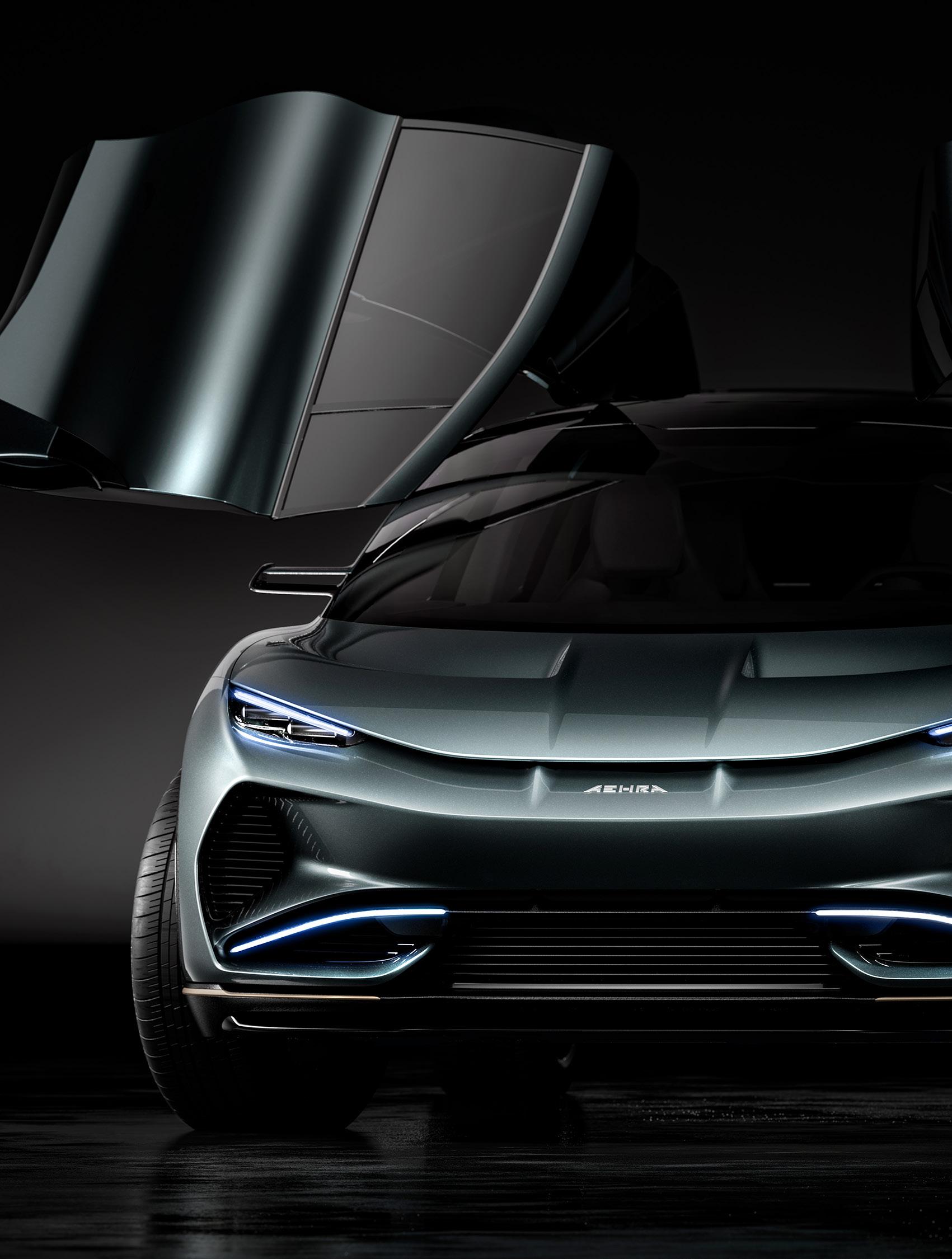
 HAZIM NADA
HAZIM NADA
“IT WILL BE DIFFICULT TO GO BACK TO A TRADITIONAL DESIGN ONCE THIS IS IN PRODUCTION”
There are many lessons to be learned from AEHRA’s story around the importance of passion within a team, commitment to sustainability, and innovative steps to be made in manufacturing sustainably— in particular, ensuring cars are infinitely recyclable—and doing so to meet the demands of high-end customers.
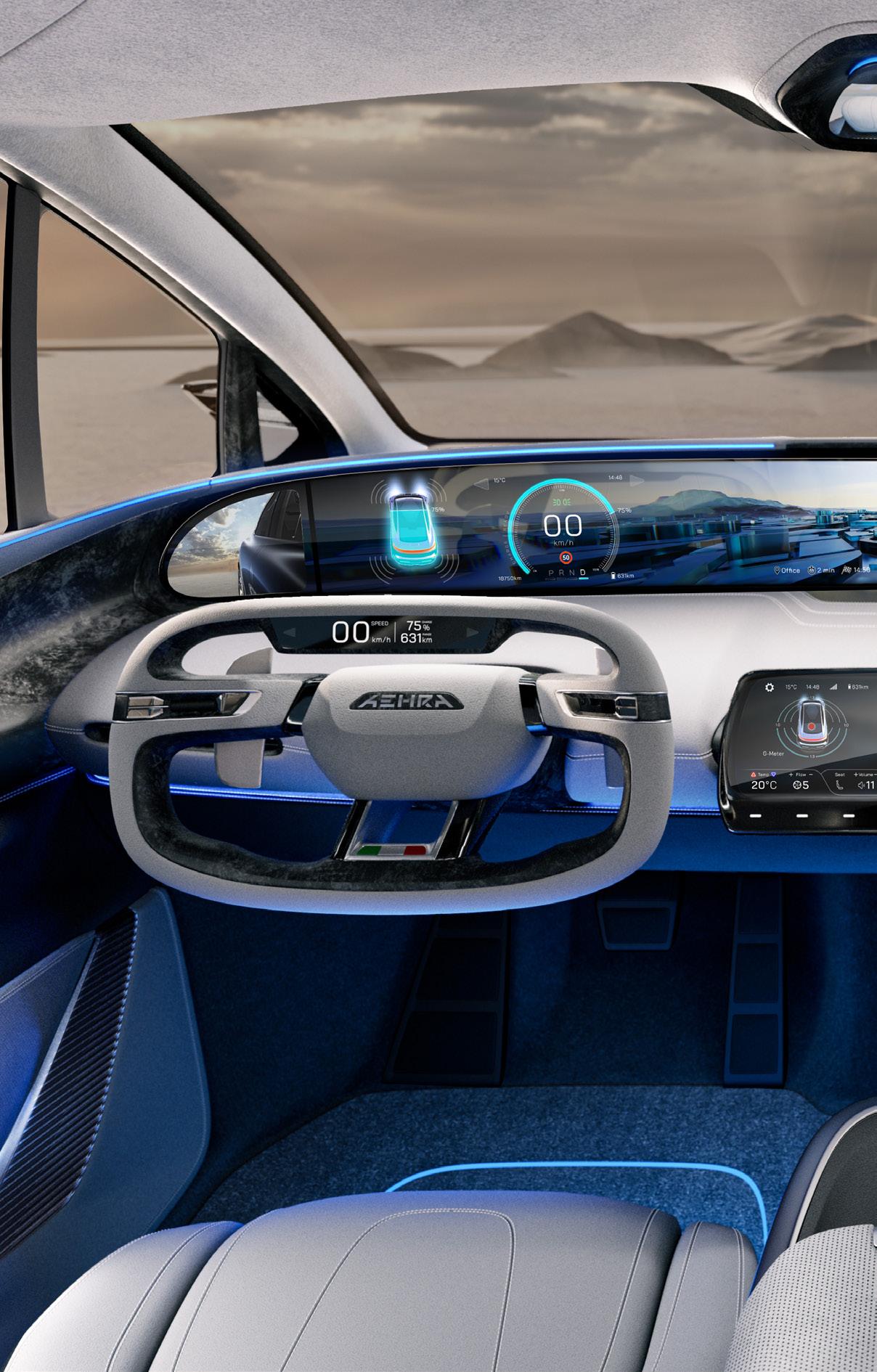
Nada himself is a well-educated man who chose to leave his previous role as an oil merchant and instead flip his career on its head. Despite this, it is the vision for AEHRA that caught the attention of some leading members of the Italian car community.
“The first challenge was convincing the engineering partners: many engineering firms have large-scale customers, so for them to entertain a small reality was the beginning. I then had to attract the right type of talent, getting people like Filippo Perini and all the other designers that we now have on board,” says Nada.
Having met with Perini trackside to discuss the idea, it’s safe to say that he took some initial convincing to consider
“THE CHALLENGE WAS CONVINCING THE ENGINEERING PARTNERS; MANY ENGINEERING
the idea that Nada was proposing—a car with a shorter ‘nose’ that defies the conventional trend in the automotive sector. While the idea was still in its infancy at the time, Perini was the first critical stakeholder to challenge the proposal in order to encourage a more provocative approach to the aesthetics of the EV. This resulted in AEHRA not only redefining the car, but pioneering design.
Describing this stage of building the team means understanding the idea that Nada presented to his now colleague.
“It’s the first product that we’ve unveiled, but what I can say is that we’re committed to bringing out vehicles that are developed around the electric powertrain. If we go back in time to the 1920s and 30s,

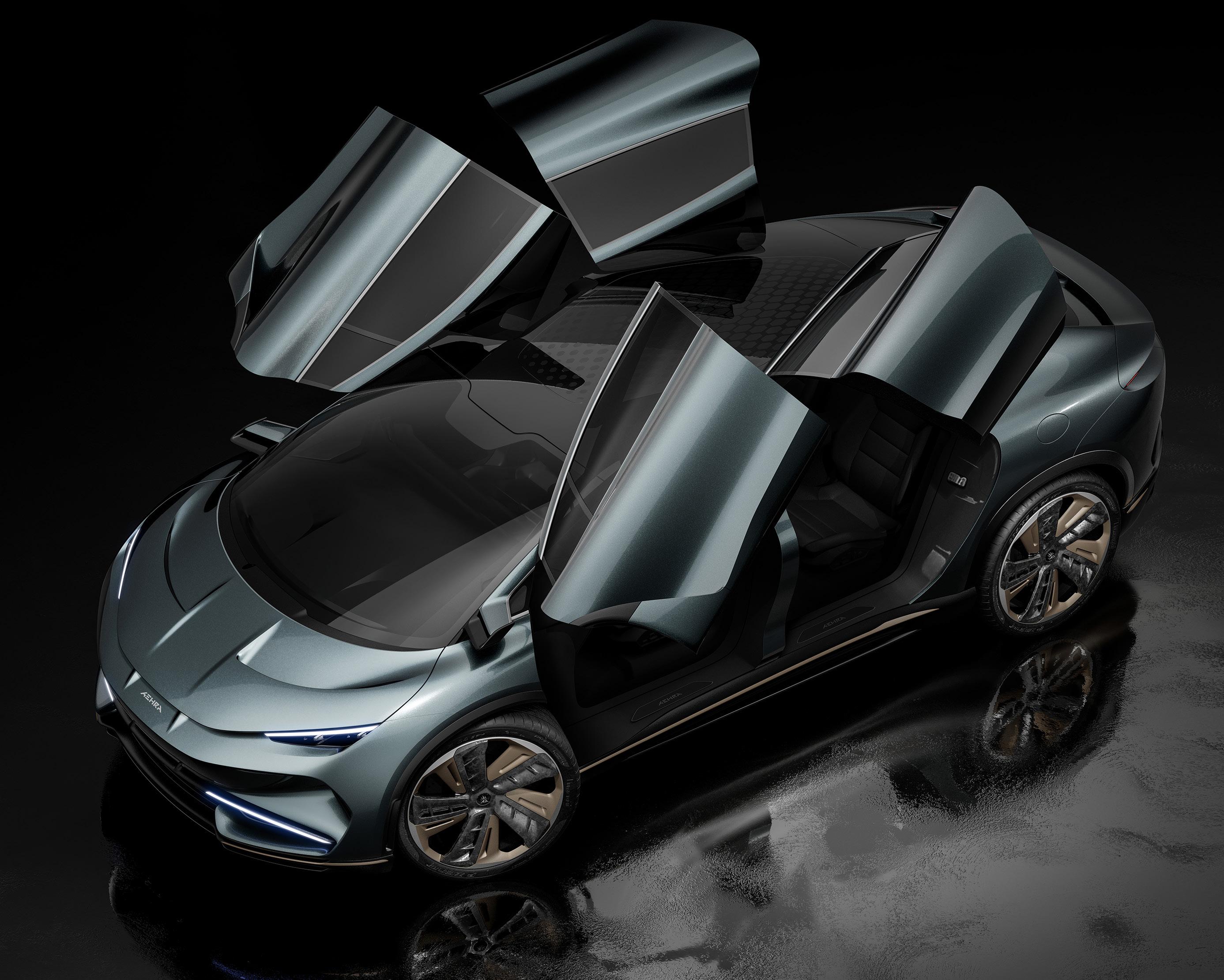
we’ll see that the automotive industry was experimenting with a lot of shapes, aerodynamics and whatnot.
“All these trials have given way to what we see today with three-body architecture, because it’s the best architecture when it comes to accommodating the thermal and volumetric needs of internal combustion engines.
“This isn’t the same for electric vehicles. We see no reason to continue to utilise the shapes of the 70s, 80s, and 90s.”
AEHRA is, by definition, changing the game by leveraging more sustainable design principles that also accommodate EV architecture in the most intuitive way— giving way to the long nose of an ICE car and shortening the front end of its vehicles.
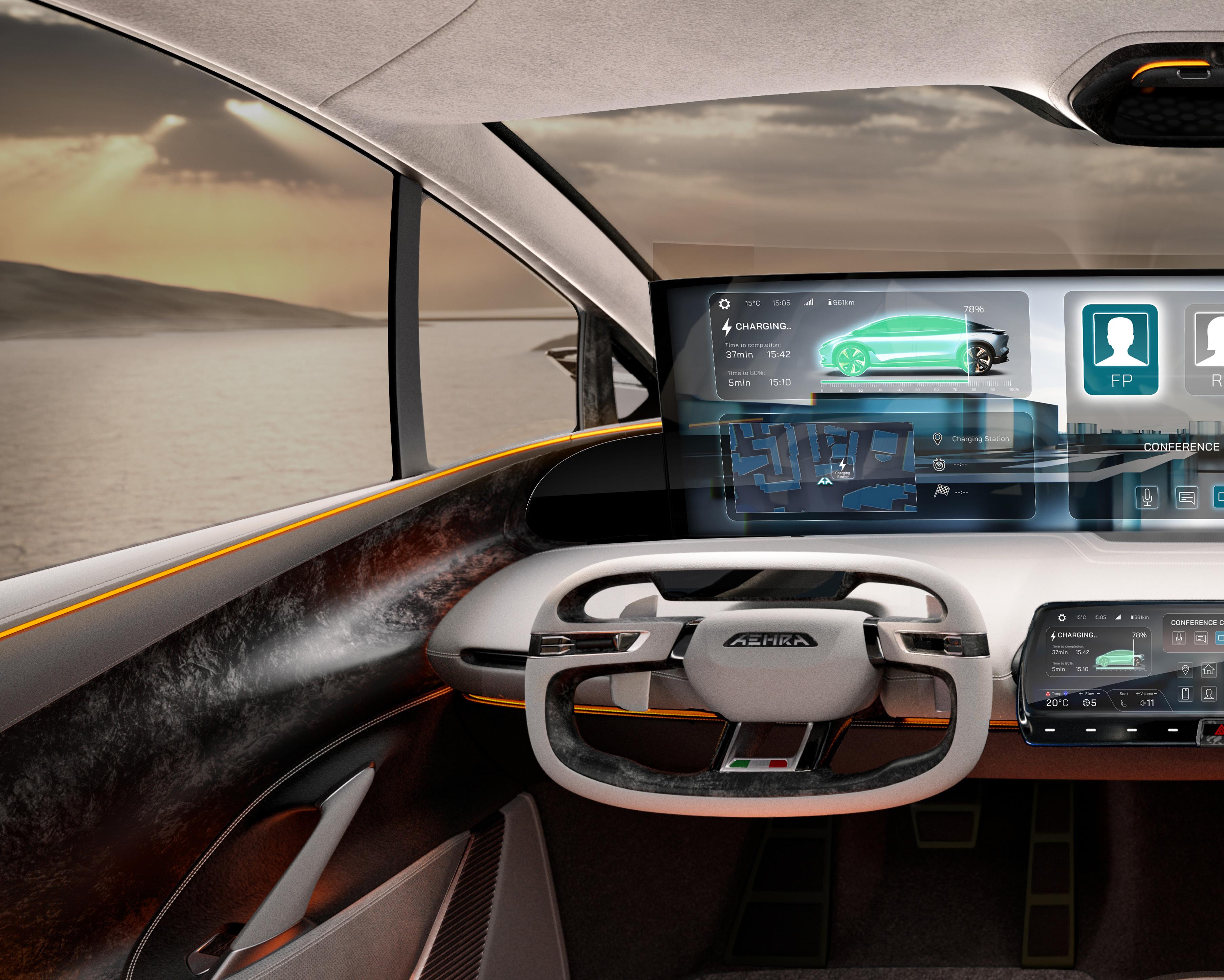

“The key element that we’ve done away with is the long hood—we’ve shortened the overhangs and developed this monobody architecture. This is the key element; AEHRA is redefining the shape of electric vehicles,” says Nada.
“By doing so, we’ve given a lot of character to the AEHRA SUV that you wouldn’t otherwise see in an electric vehicle. We’re also expanding the cabin space within the same volume of car, changing the customer experience.”
The three-metre-long stance of the SUV is one of its trademark attributes and, when combined with a significantly shorter front end, provides a substantial increase in space inside the car—enough space to comfortably fit four NBA players.
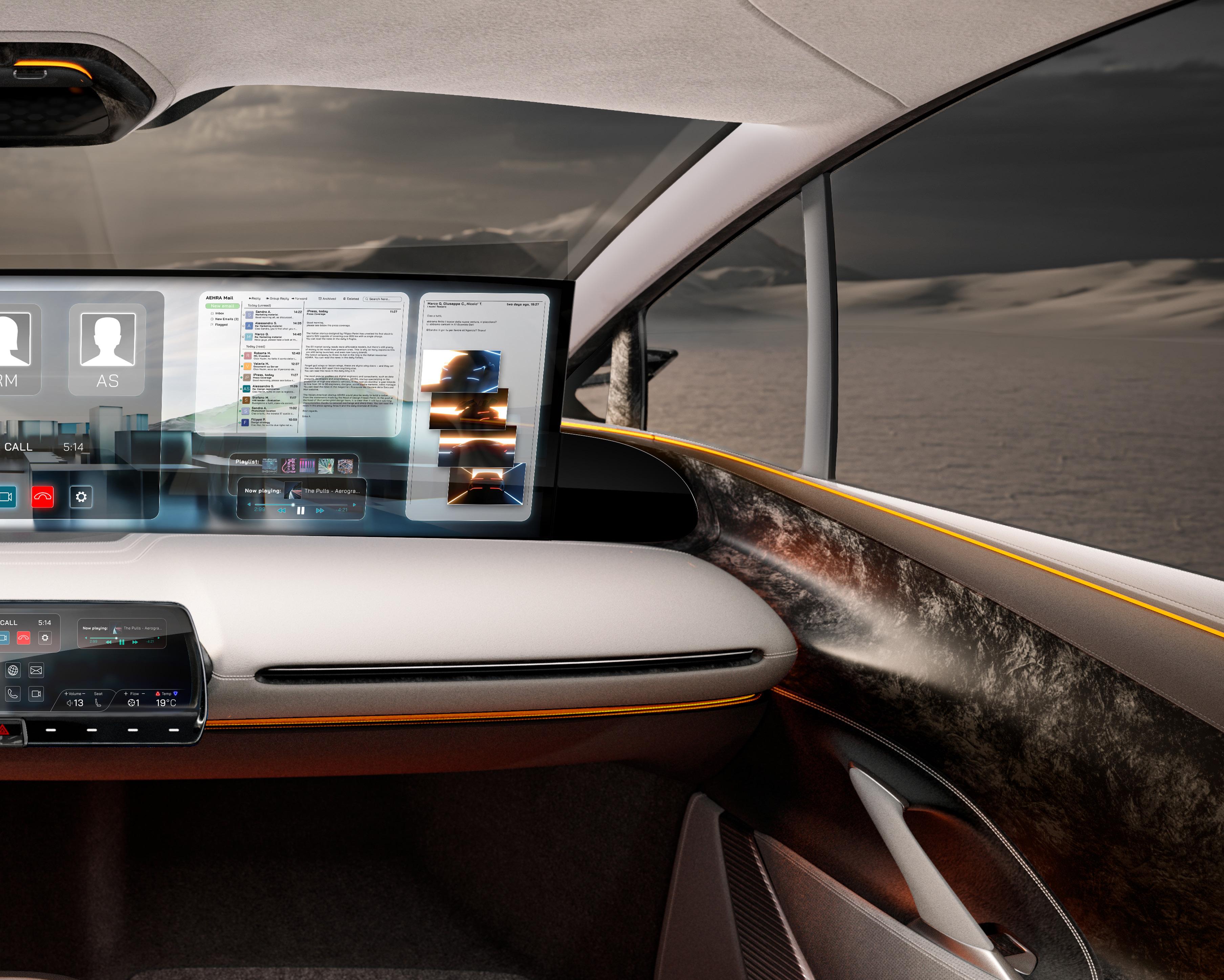
Procurement is an important focal point of AEHRA’s efforts, as the company looks to reduce the number of bespoke components in the car—and even the car body itself.
The sustainable breakthrough can be seen in the monobody formation of the vehicle, which is made using sheet mould carbon (a carbon fibre process that is essential to the company’s production plans). From a material perspective, this is one of the highlights of the car. Using composite material means that the AEHRA SUV is not only made of recycled carbon fibre materials, but is also recyclable at the end of life.
“When it comes to the materials that we’re using, we will be the very first to conduct mass production of a vehicle of this size, these dimensions, utilising sheet mould carbon,” says Nada.
“The resulting structure that is produced within our process will be reutilised for at least five cycles after end of its life, resulting in weight savings by using such materials, which then translates into a direct energy saving that’s also enhancing sustainability.”
When it comes to sourcing the battery and other electrical components of the SUV, Nada assures us that negotiations are taking place to encourage a sustainable supply of equipment for the car. Having put such a strong emphasis on procurement allows the company to localise most of its supplier network and encourage production efforts closer to home.
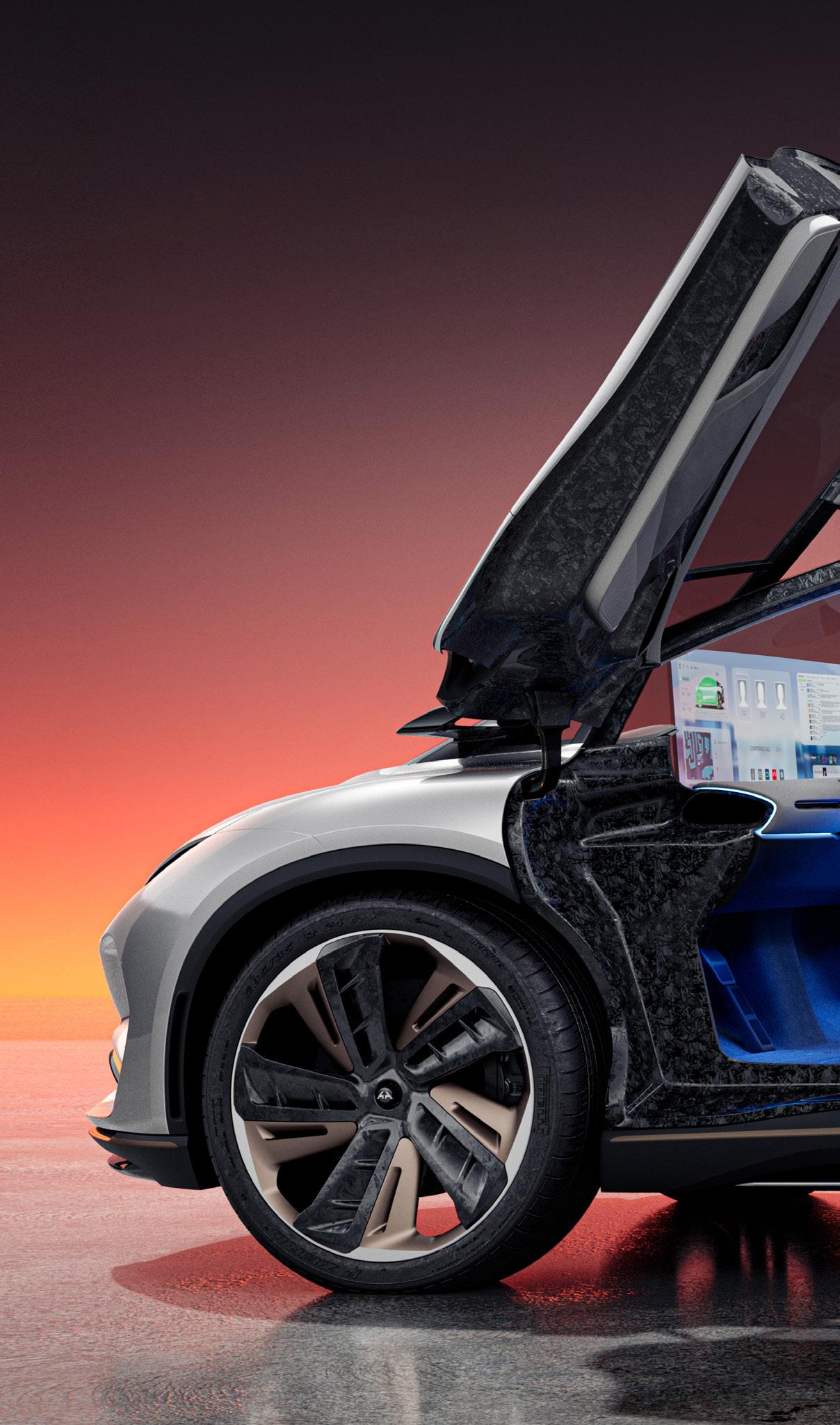
“So far, we’re able to procure pretty much all of the components within the continent. Using composite materials means we have to stay as close as possible to Italy, because it’s the only country that contains the know-how and production capacity for such materials,” Nada explains.
The team taking on these challenges is one of Italian heritage. Nada himself reached out to some of the key innovators in the automotive world to tap into their expertise thus far. As of now, the production segment of the business will be led by its new Chief Engineering Officer. Plucked from the very heart of the automotive industry, Franco Cimatti is the latest to join the team in hopes that he will encourage the same disruptive ethos of its Founder.
“With over three decades in charge of engineering at Ferrari, and also about five years at Lotus, he’s a particularly important person, because he comes from the core of the vehicle dynamics experience—the
“WE
OF THE TWO VEHICLES TOGETHER, AROUND THE WORLD”
HAZIM NADA
CO-FOUNDER & CEO, AEHRA
top end of the internal combustion engine experience,” says Nada.
“He has also been in charge of fully electric platform developments at key houses like that of Lotus, so he’s a very important Italian figure and is able to marry all the key elements that we require.”
Nada believes that Cimatti’s presence will not only enhance the company’s ability to produce the car, but also influence the right talent that share the AEHRA ethos—and bring with them the Italian touch.
The firm recognises the growing trend for digital capabilities. One of the key benefits of the monobody architecture adopted by AEHRA is its capacity for a revolutionary cockpit experience.

As infotainment is a critical part of any high-end vehicle, the team is focusing on how it can make the SUV more intuitive, as well as make full use of the electrified platform and extra space inside the car.

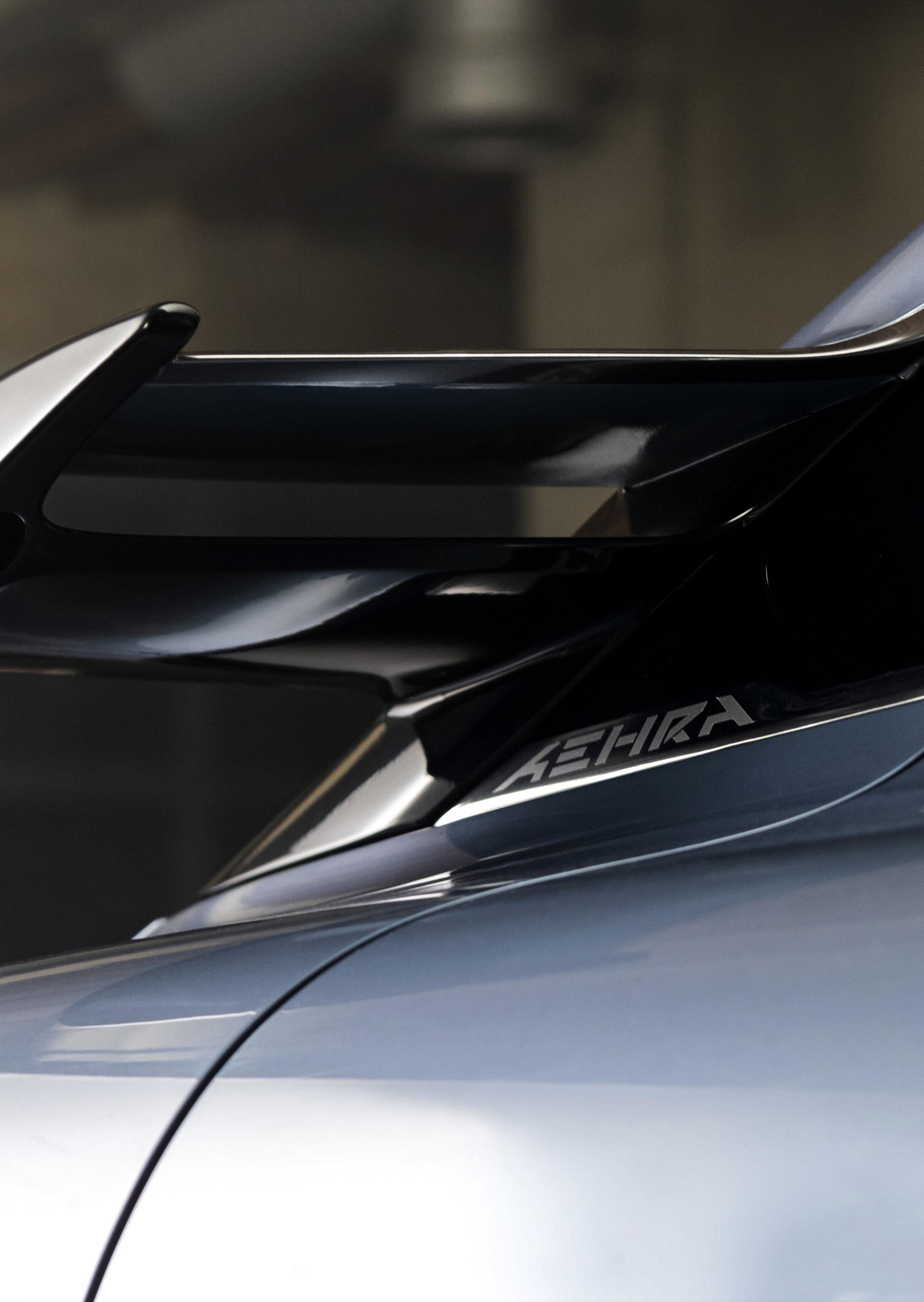
One of the main drivers of the humanmachine interface (HMI) design is consumers themselves. According to Nada, customers are less likely to want rear passenger screens due to nausea and discomfort—as well as the fact they probably already have one on their person.
The AEHRA will do the impossible and provide passengers a connected experience that allows the car to collaborate with other devices in the digital ecosystem.
“For the rear passengers, we are focusing on these types of experiences: personalised media solutions for each seat that can interact with such solutions. We’re not aiming to have screens in the back,” says Nada. “The front row will be dominated by this particular screen solution, because it’s very unique and allows a level of productivity and entertainment that is impossible today.”
But the most important feature is the range—800km per charge—and that will be supported by the battery solutions. The battery pack itself will be somewhere “between 115 to 120kWh”. Though Nada

states that “it will be closer to 120 with the solution that we’re currently developing and make use of NCM prismatic cells”.
The AEHRA story is one of technological, engineering and sustainable triumph packed into an EV that will likely evolve as time goes on and trends become evermore digital.
Since the SUV made it into the media, the company has grown more determined than ever by the responses received across various platforms. The design of the vehicle itself is its main selling point, both to potential customers and the industry itself—in terms of being a feasible, thriving concept, the company has been praised for its exceptional work on the production-ready product. The time is now for AEHRA to secure the heart and soul of the daring automobile.
AEHRA’s aim for the near future is to finalise its negotiations with partners and suppliers to get them on board for the ride—a ride that will soon be split between two vehicles when AEHRA kicks its Sedan prototype development into gear.
“In April, we will ramp up the demonstration of the two vehicles together around the world. As soon as the saloon version is unveiled, we will begin our tour to market both vehicles,” says Nada. “Within the next six months, we need to identify a location to potentially internalise the final assembly. These locations will need to be affordable and workable.”
“When you place our sedan or the SUV close to a traditional vehicle, both really stand out; they’re very different. I think it will be difficult to go back to a traditional design once this is in production.”
“WE’VE SHORTENED THE OVERHANGS AND DEVELOPED THIS MONOBODY ARCHITECTURE”
HAZIM NADA CO-FOUNDER & CEO, AEHRA
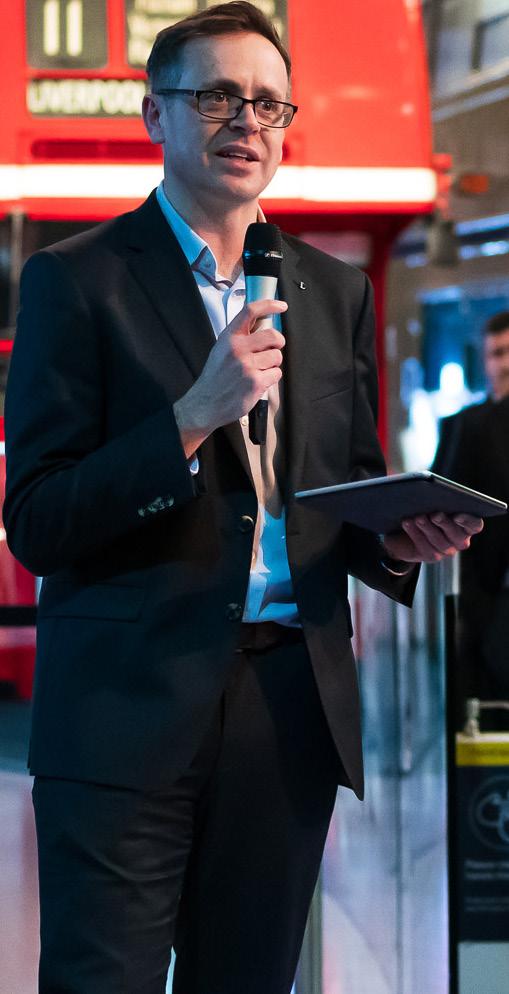


s eloquently explained by Filippo Perini, Chief Design Officer at AEHRA, we’re entering a new era— one that will see immense shifts in the way cars look, feel, and operate.
At EV Magazine LIVE, we set out to paint a picture of the industry and how it currently interacts with others to fulfil the electrical revolution sustainably and without compromise.


Hosted at an iconic venue—one close to many hearts in the room at the show—the Transport
Museum, EV Magazine LIVE’s first ever showcase marks a new era for EV Magazine, but also provided some great thoughts to take away into the wider automotive, aviation, and marine industries—and those that support them.
From revolutionary design and adoption of EVs to initiatives that take lessons from passenger cars and raise them to other sectors, attendees enjoyed an intimate discussion with leading executives who raised critical questions around e-mobility and the drive to decarbonise transport.


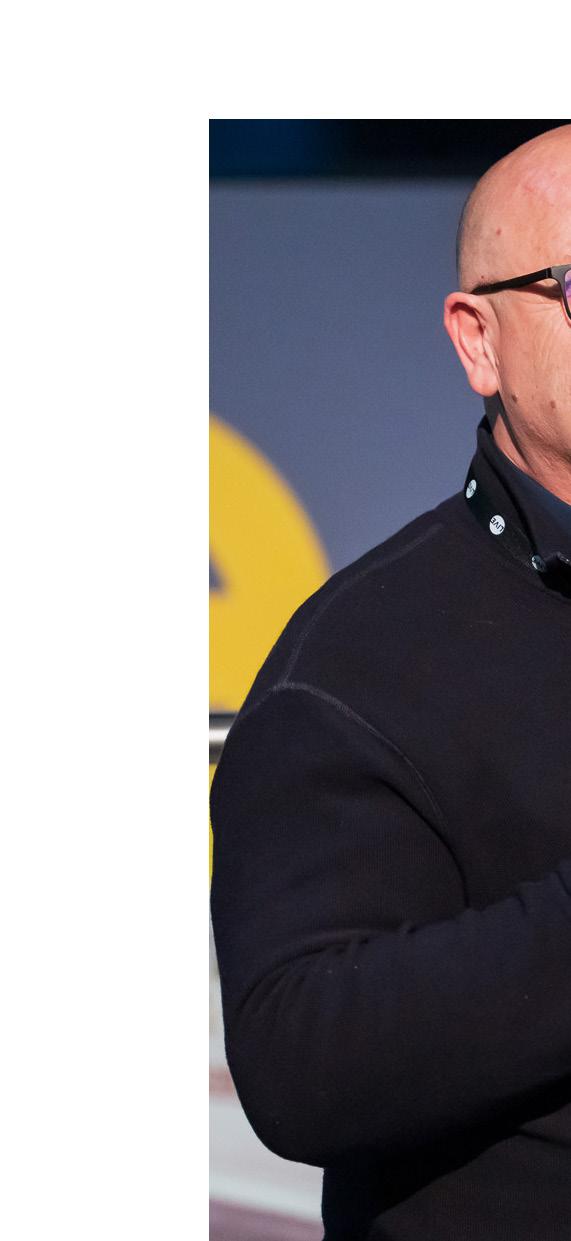
“OUR GOAL IS TO EVOLVE OUR DISCUSSION, OUR CONCEPT, TO SOMETHING THAT IS EMOTIONAL ENOUGH TO FILL THIS LACK OF CONTENT”
Having spoken to AEHRA’s Chief Design Officer, Flippo Perini at the launch of the company’s first ever EV, he told us a lot about the sustainable composition of the car and it plays to localised production methods, sourcing sheet moulded carbon material from Europe for its monocoque chassis build.
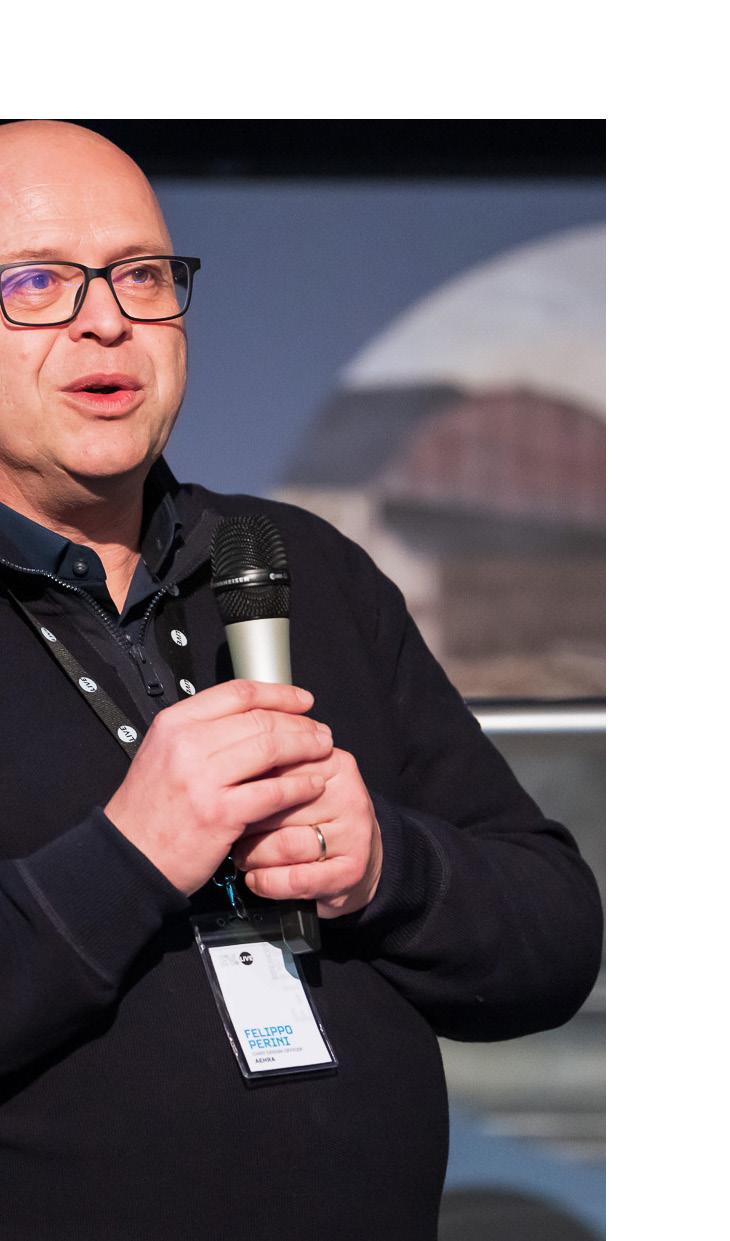
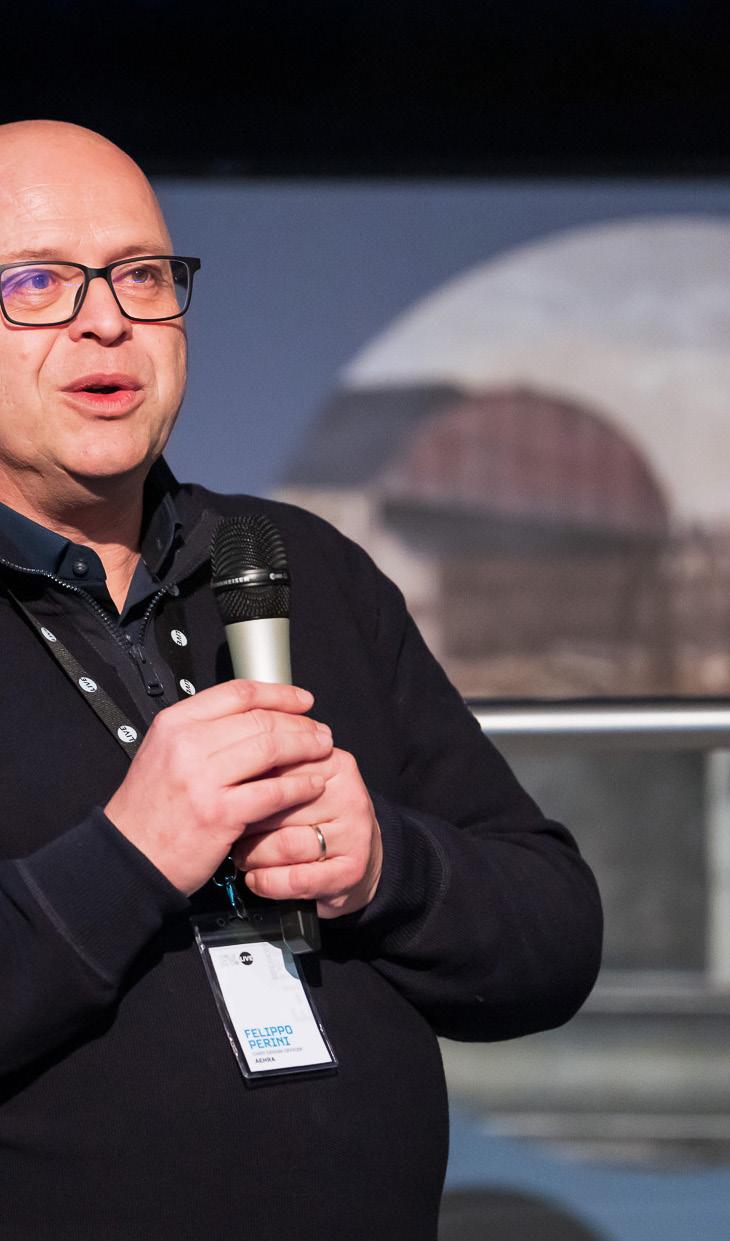

Joining us at EV Magazine LIVE, Perini brings a new level of detail to the conversation with the AEHRA SUV in front of him for reference. Like the AEHRA team, the car travelled across borders to be with us for its first UK appearance and grabbed the attention of our in-person attendees.
Perini speaks about the difficulties he faced when designing the car to meet the needs of the Italian car scene while transitioning his design methods to the modern world.
“I was asked by Hazim Nada to translate this passion into a new recipe for an electric car,” says Perini.
Taking principles from automotive, the team understood that the absence of an internal combustion engine meant that a significant space had to be filled—the ‘male’ emotion in the vehicle, so to speak.
“Our goal is to evolve our discussion, our concept, to something that is emotional enough to fill this lack of content.”
Tackling the debates between public transport and personal passenger vehicles are two very good friends Sara Sloman, Chief Strategy Officer at Paythru, and Alex Gilbert, Head of Energy and E-Mobility at Transport for London.
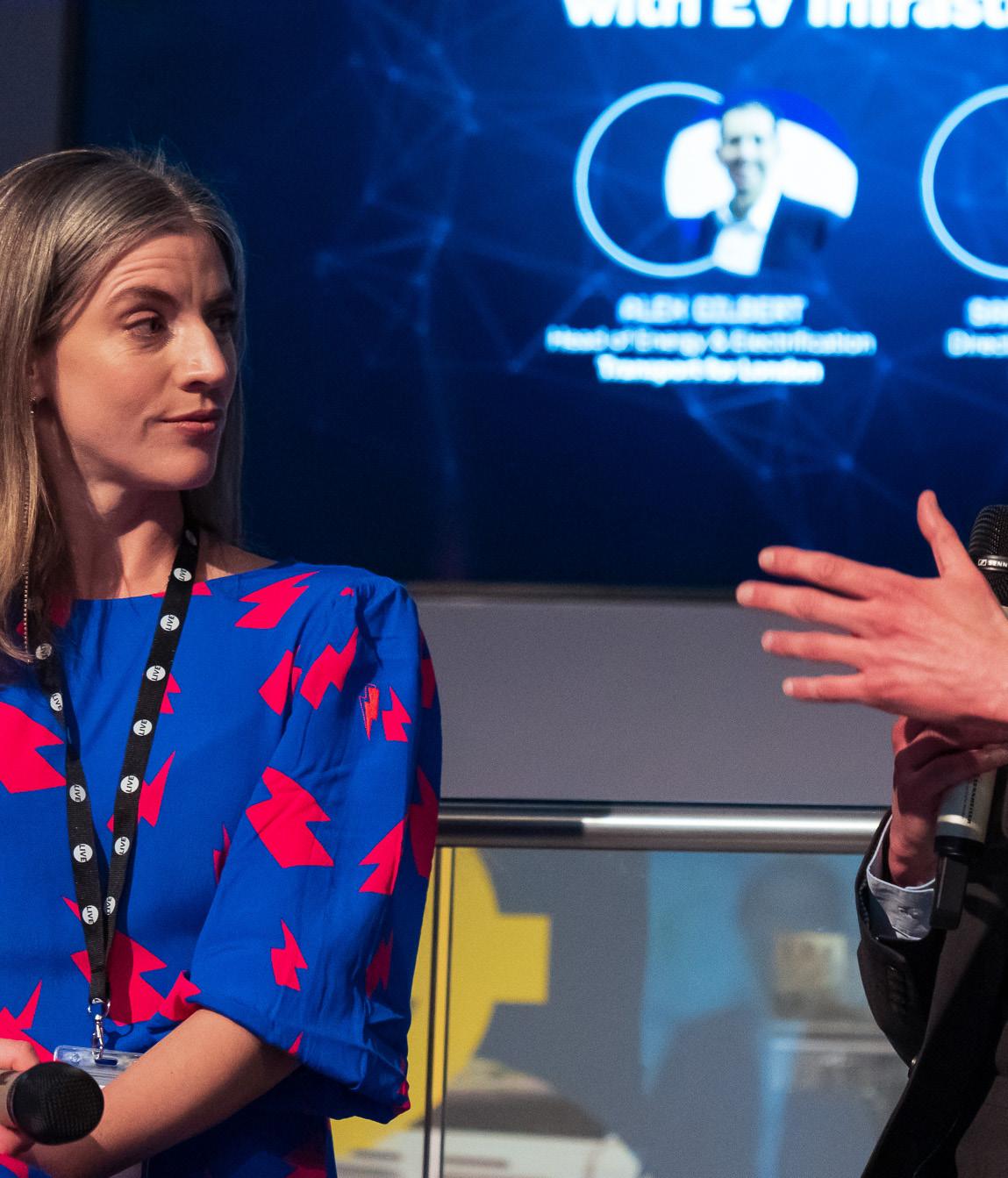

It’s safe to say the pair really evangelise the history of public transport in London and the venue in which they were hosted, but the real conversation to focus on is one of acceptance and innovation.
As explained by Gilbert, “the bit that gets interesting is [marrying] public transport with EVs, and getting the balance right.”
He touched upon the key point that acceptance of EVs is often a task for the public transport authorities and users, and vice versa, as all methods of transport have their place in the wider e-mobility ecosystem.
“What gets really interesting is this kind of mobility-as-a-service, but these blurred lines of what will and won’t be public transport going forward,” says Gilbert. “It’s just not as easy as it used to be, but it means there is a role for everyone.”
Sloman continued this point from Gilbert by further emphasising the speed at which the conversation has changed from many organisations being reluctant to shift, but then understanding where the trends are and the demands on them to invest more in electrical infrastructure.
“I think there’s a balance between ‘build it and they will come’ or ‘build it and shove them towards it’—the carrot and stick principle,” says Sloman. “We’ve seen a huge surge in micro-mobility and public transport, and the direct result of clean air zones.

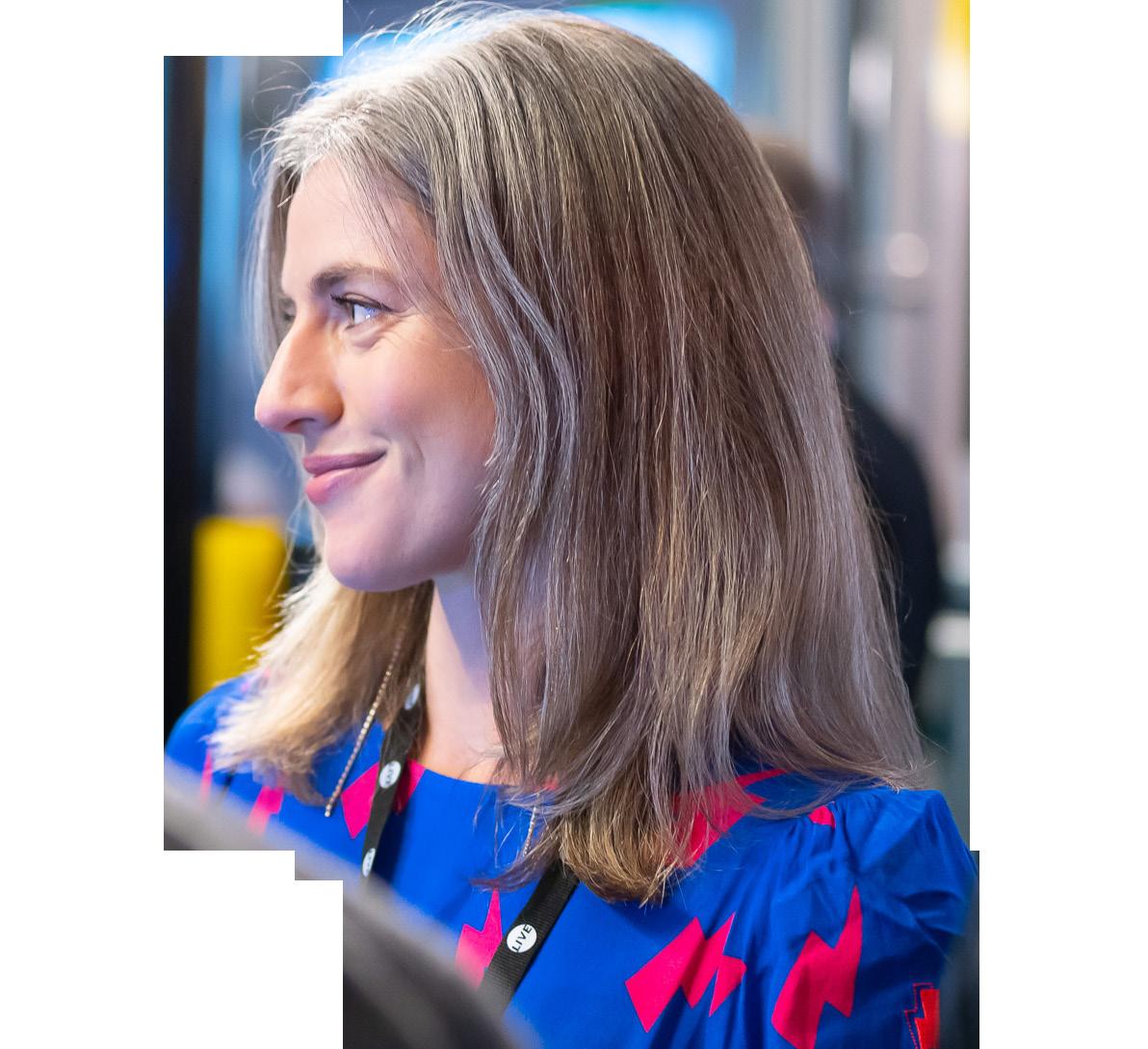
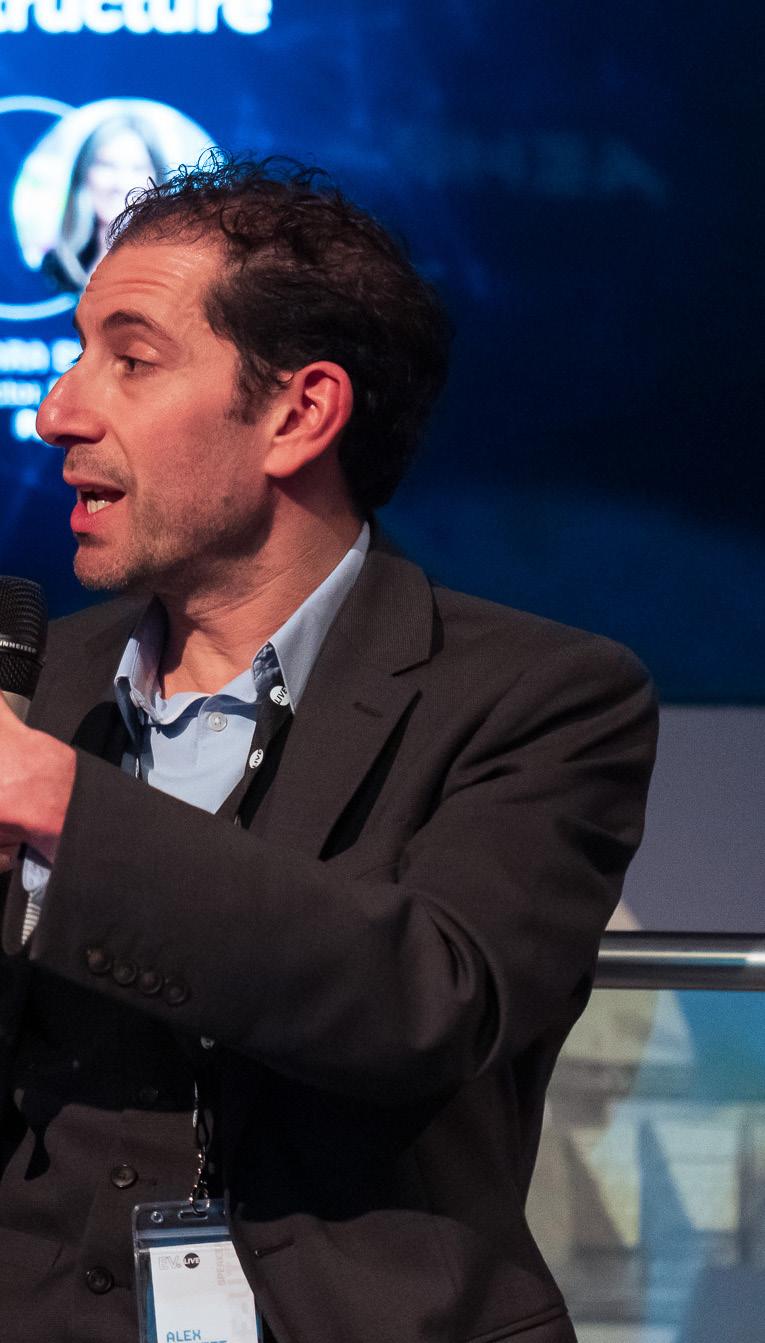
“WE’VE SEEN A HUGE SURGE IN MICRO-MOBILITY AND PUBLIC TRANSPORT, AND THE DIRECT RESULT OF CLEAN AIR ZONES”
S ARA SLOMAN CHIEF STRATEGY OFFICE R, PAYTHRU

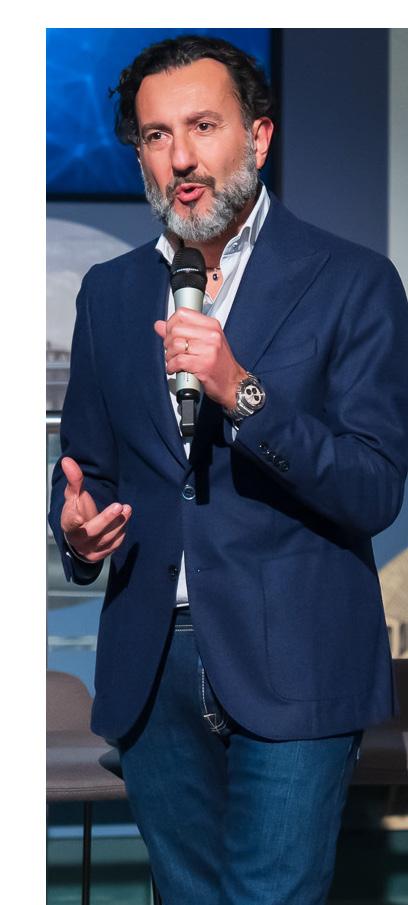
“WHEREVER WE RACE, WE WILL LEAVE BEHIND THE CHARGING INFRASTRUCTURE”
RODI BASSO CO-FOUNDER AND CEO OF E1 SERIES

Opening up the floor to a new world of electrification, Rodi Basso, Co-Founder and CEO of E1 Series delves into the motorsport that he has so passionately developed in collaboration with Alejandro Agag—the Founder and CEO of Extreme E, Founder and Chairman of FIA Formula E and E1 Series—and in partnership with SeaBird Technologies.
This is a motorsport that will be covered later on in the year, however, Basso paints a great picture of the motorsport as an initiative to raise awareness of sustainability and climate issues affecting coastlines, and achieving buy-in from the relevant stakeholders to action those changes.
“What is important for me to share with you is that we have much more beyond the sport ,” said Basso to the attendees at the event.
“Wherever we race, we will leave behind the charging infrastructure. This will allow people to start thinking ‘okay, I can buy an electric RIB, I can buy a leisure boat based on electric propulsion’.”
“Ours will be a simple contribution, but in a good direction.”
Through its Blue Action programme, supported by Carlos Duarte—the leading marine biologist and researcher in the world—that will allow E1 to drive progress towards more sustainable oceans.
Someone who is at the forefront of the UK’s charging infrastructure development is Sam Clarke, Chief Vehicle Officer at GRIDSERVE Sustainable Energy Limited.
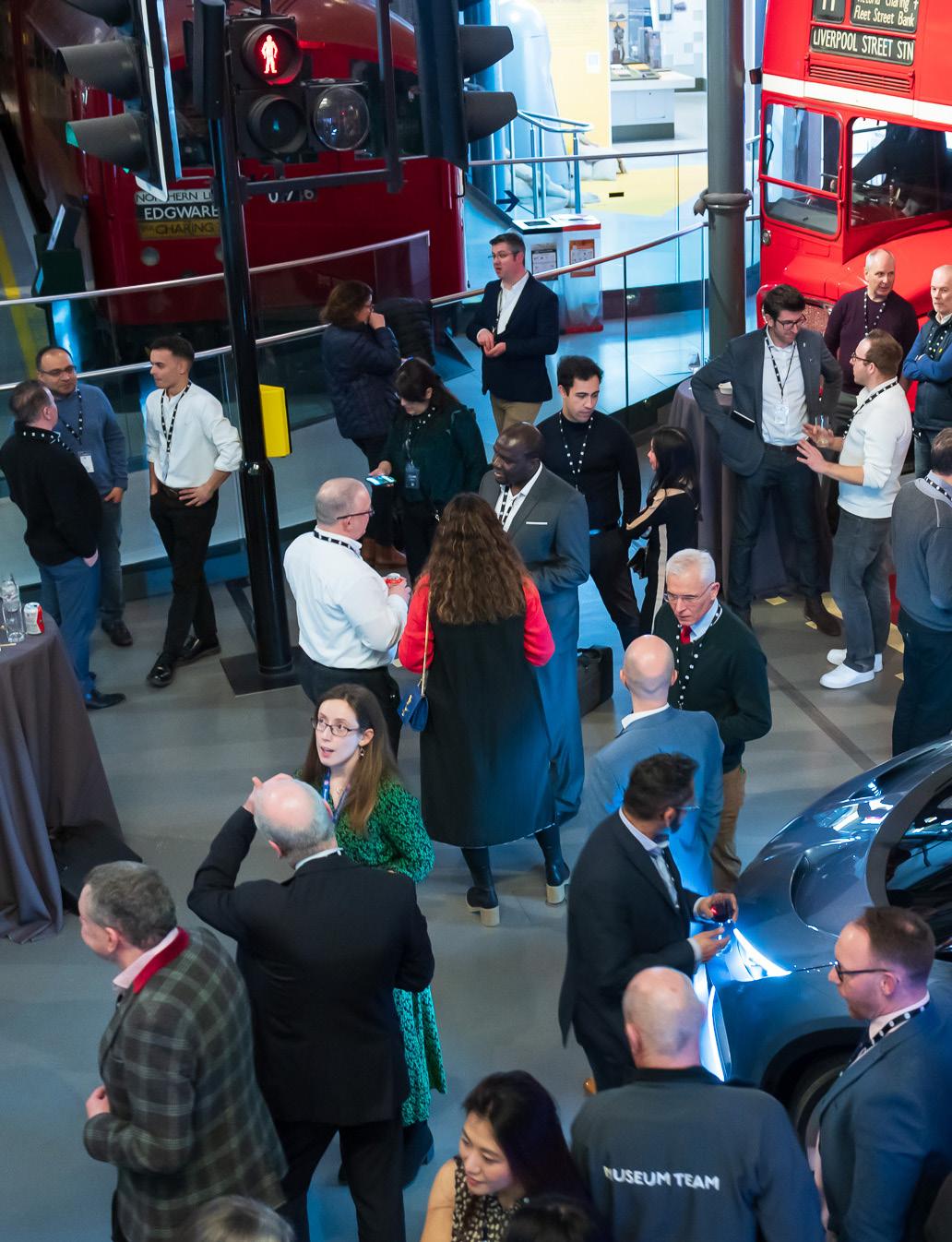
As an EV driver of 20+ years, Clarke is now working with the team at GRIDSERVE to electrify the nation by means of its Electric Highway project. One of the points addressed by Clarke in the current ‘EV bashing’, which is seemingly whittling away as more and more drivers make the shift to electrified cars.

“We’ve got a lot of misinformation here and if you’re going to look at the media or news then please make sure that it is fact checked,” Clarke explains as he believes that many of the opinions from influencers discredit the country’s electrification capabilities.
After citing some key statistics on charger installation requirements and where to find them, Clarke stresses the importance of taking action over dwelling on the challenges ahead.
“It’s about the right chargers, at the right places, at the right time. It’s not about a big number that frightens everybody.”
CHIEF VEHICLE OFFICER, GRIDSERVE

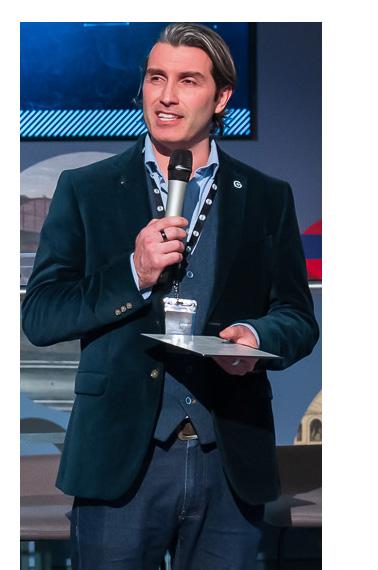
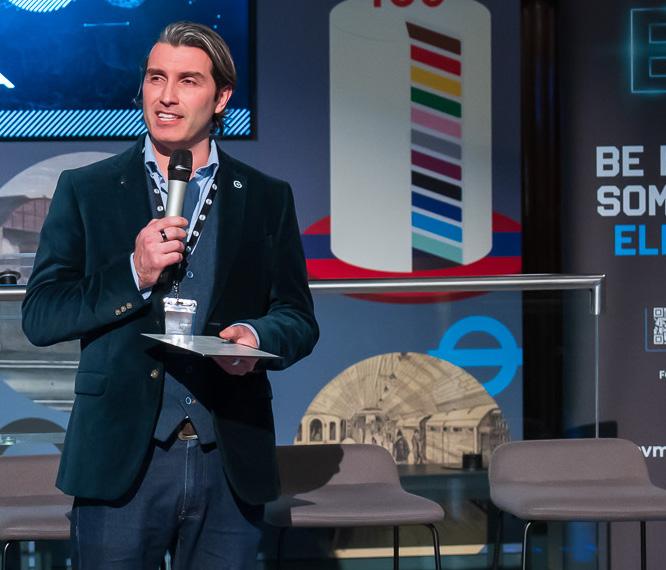
“IT’S ABOUT THE RIGHT CHARGERS, AT THE RIGHT PLACES, AT THE RIGHT TIME. IT’S NOT ABOUT A BIG NUMBER THAT FRIGHTENS EVERYBODY”
MAR TIN KEARNS
HEAD OF E -MOBILITY, VO LVO TRUCKS
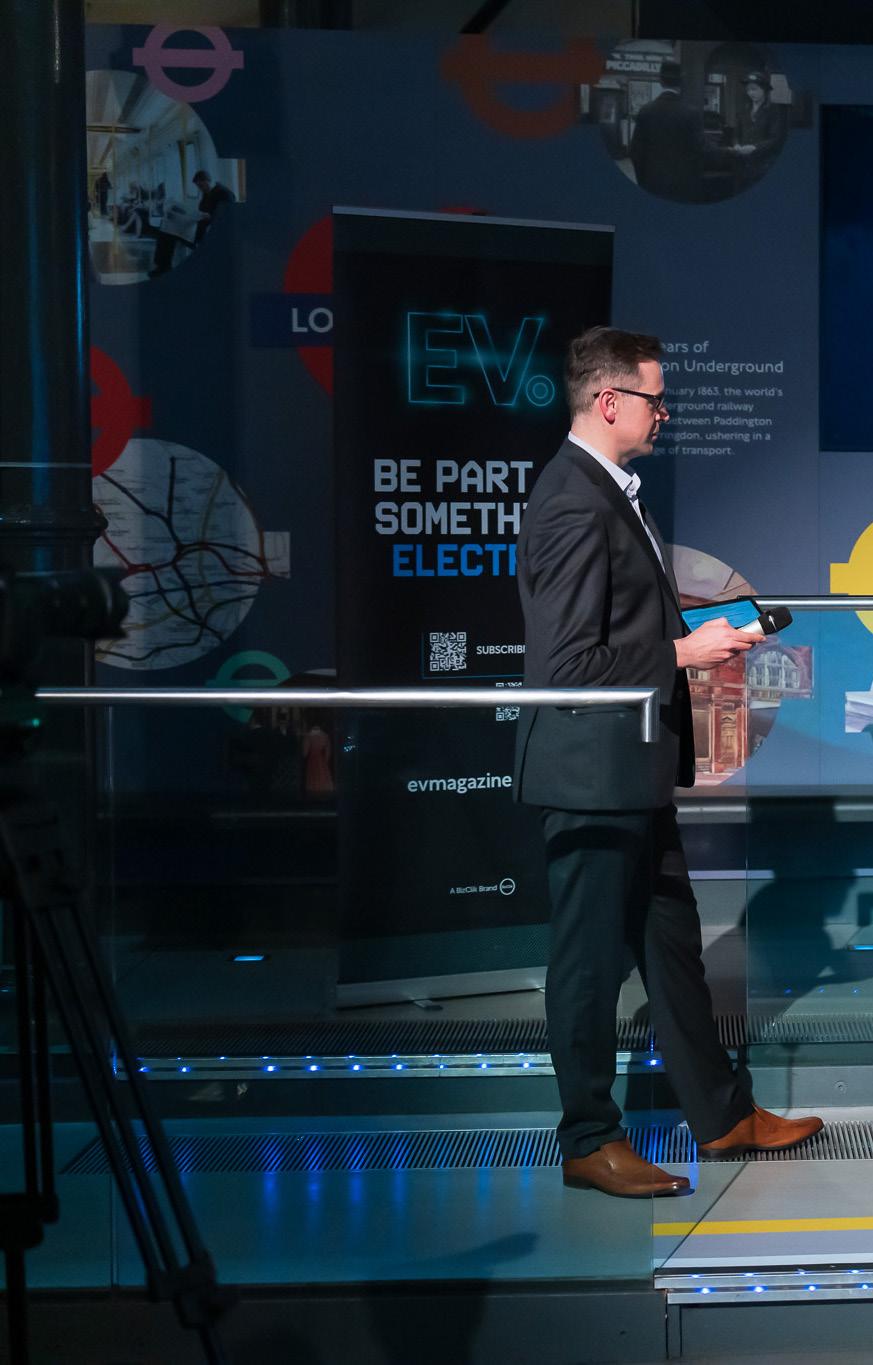
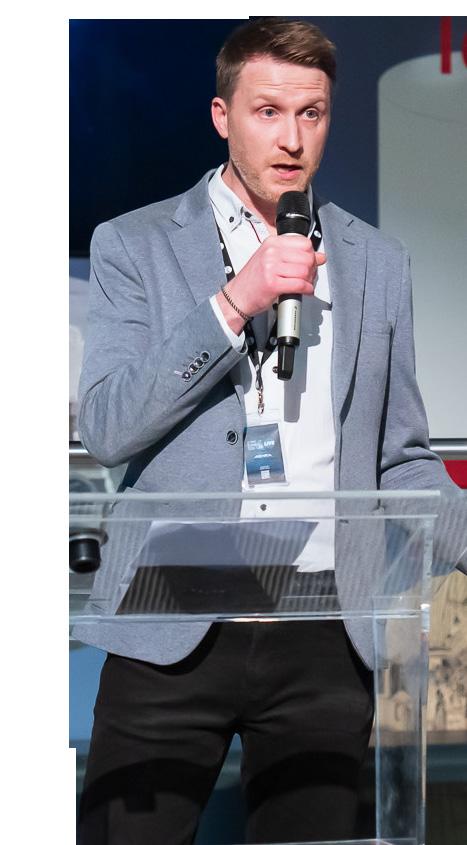

“THE ENERGY EFFICIENCY OF THESE VEHICLES IS DEVELOPING AT SUCH A RATE NOW”

As an important topic in 2023, the commercial vehicle discussion closed the show, thanks to Martin Kearns, Head of E-mobility at Volvo Trucks.


Firstly, he addressed the need for decarbonisation in transport and the technologies that will allow companies to leverage long and short-haul vehicle capabilities—electric and hydrogen fuel-cell.
“There seems to be a sharp line between those two technologies. It’s also a lot about availability, infrastructure, and, also important, the price of green electricity and green hydrogen,” says Kearns.
Really, what Kearns was able to do is share an overview of the combined efforts between electrified solutions, hydrogen-powered vehicles, as well as the potential biofuels to enable a sustainable future for all vehicles, let alone the commercial sector.
Kearns says: “The energy efficiency of these vehicles is developing at such a rate now. When we launched our first generation, fully electric buses in 2015, the batteries had a capacity of around 50kWh. Second generation, 66kWh. And now, with the third generation batteries, we’re somewhere around 90kWh.”


In-car infotainment has evolved over the years, but EVs serve as platforms for enabling carmakers to differentiate and meet drivers’ demands with ease
Although many generations get a hit of nostalgia when they think about tuning their car’s radio or pulling out a folded paper map to find their way—a system of navigation that has been forever outdated— current generations and beyond won’t have to endure such rigmarole.
Aside from navigation, today’s in-car consoles contain all the necessary features that drivers have come to expect, such as digital screens to provide the data and vehicle updates supported by monitoring components from within and around the vehicle. But electrification births a new era of expectation, with technology becoming more capable than ever before—and it’s all driven by software.
If you’ve been awake at all over the past couple of years, you’ll know that technology is taking over. When it comes to mobility, there are inherent benefits to this beyond keeping up with the latest trends. So, we’re keen to find out what it is that customers require now that engines are out of the picture.
EV manufacturers are taking a digital approach to designing their next vehicles, examples of which can already be seen in the latest models hitting the streets with digital displays and built-in maps, connected services, and data insights.
The Head of Global Automotive at Capgemini Group & Head of Automotive at Capgemini Engineering, Alexandre Audoin, provides valuable insights into the ‘next destination’ of automotive.
“The automotive industry is being redefined by a software-driven transformation. Our research revealed that software-based features and services will constitute a US$640bn market by 2031, growing from about 8% of OEMs’ current annual revenue (US$181bn) to 22%—more than three times in terms of value,” says Audoin.
The days of dreaming about a techdriven future are almost over. Soon will be the beginning of what can be called true hands-free automotive design. From aftermarket installations of hands-free telephone kits, EVs make way for all senses to be used to operate a car and its computer.

Companies like Volvo, Sony, and other auto and tech firms are heading full pelt towards sensor-driven, AI-powered solutions that can analyse the driver’s behaviour and even read their lips. This is in some ways a scary concept, presenting new questions and regulations around how firms like Sony can manage cars’ ability to listen to their drivers.




“INFOTAINMENT SYSTEMS ARE ADVANCING AND INCREASINGLY BECOMING MORE SOPHISTICATED”
ALEXAND RE AUDOIN, THE HEAD OF GLOBAL A UTOMOTIVE, CAPGE MINI GROUP
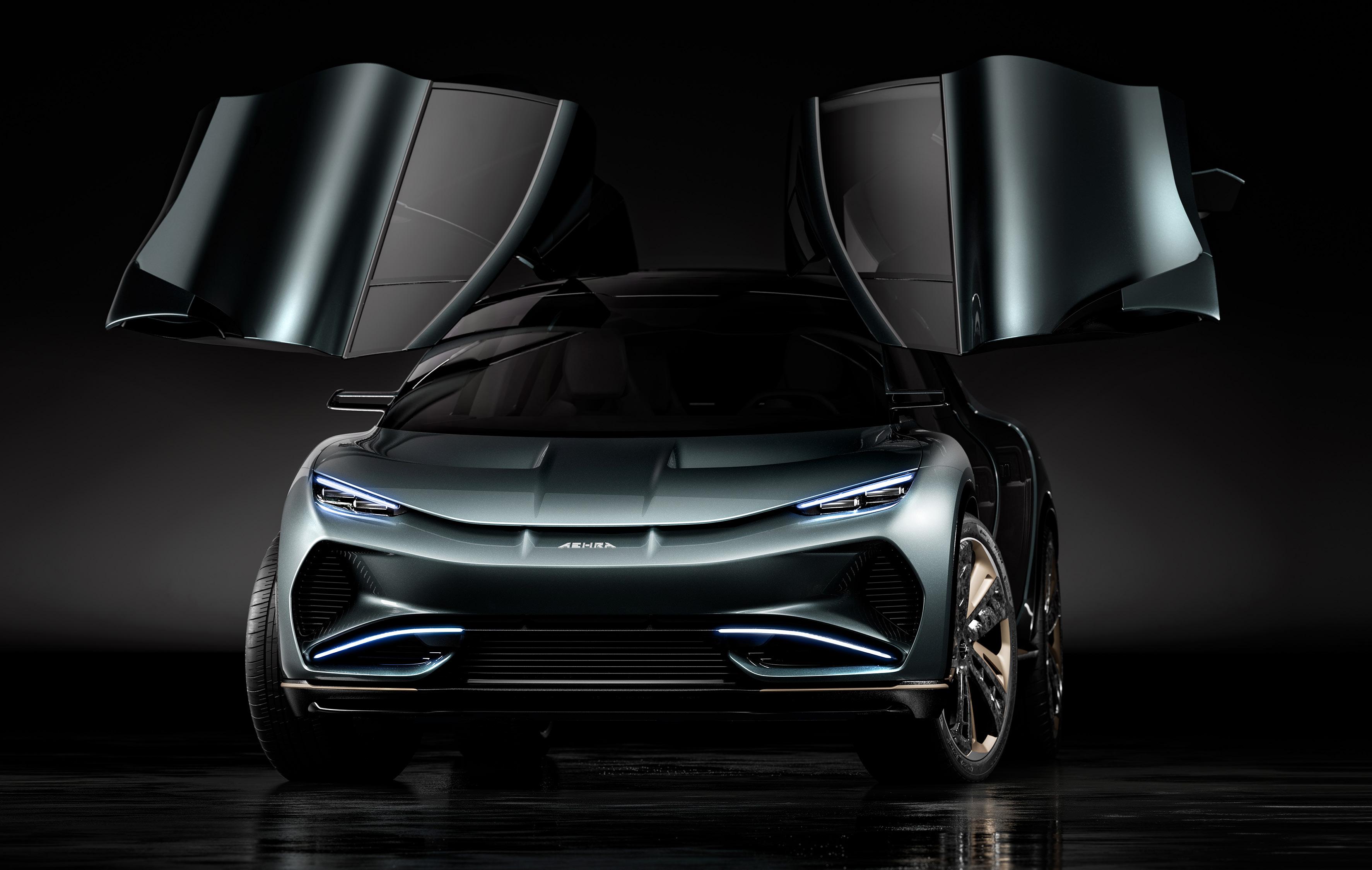







The company represents a prime example of how technology has reached a crossroads with the automotive sector. At its heart, HARMAN supports some of the most innovative brands, such as JBL, Lexicon and AKG, with design and engineering expertise.
The company’s products are global and its connected car systems are advancing in collaboration with EVs. HARMAN was acquired by Samsung as a business with aligned views and is now committed to further research and development to redefine infotainment in EVs. This includes supporting industry trends like IoT, 5G, and new connected car capabilities.

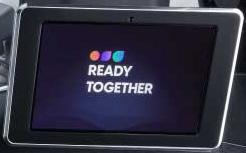
From sound and screens to ADAS systems and over-the-air capabilities, HARMAN is embedded in the electrified automotive experience.
And much of this is driven by software. In particular, Audoin believes one of the key drivers of this growth will be the shift from internal combustion engine (ICE) powered vehicles to those that can be managed by a unified software platform.
“To capture these potential gains, automakers shouldn’t be afraid to look externally. We’re already seeing a wave of traditional automotive organisations partner
with pure tech players in a bid to break away from outdated software architectures and deliver this new generation of connected vehicles,” Audoin says.
As autonomous driving evolves, more emphasis is being placed on in-car functions, which are expected to evolve as cars become extensions of personal space.
“Infotainment systems are advancing and increasingly becoming more sophisticated. Large touch-dashboards will allow drivers to easily access and control a range of features and services,” says Audoin.
Much of the experience of being in a vehicle resonates with that of the smartphone and, as cars enter the digital ecosystem, mechanical features will become less conventional over the years to come. Audoin also explains that connectivity will be a major factor in making vehicles safer and driving forward the use of data to enhance and continuously—remotely—update the user experience.

“As connectivity increases (spurred on by the advent of 5G and, soon, 6G), driving is expected to become safer and more automated,” says Audoin.
“More data will be shared from the vehicle to other devices and systems, resulting in real-time traffic updates, remote diagnostics and maintenance alerts, as well as more advanced driver assistance systems (ADAS), which provide features such as lane departure warnings, automatic emergency braking, and adaptive cruise control.”
Electrification breeds a whole new era of competition, which we are yet to experience to its fullest extent. As leading software developers take advantage of this opportunity, will this affect the original providers of infotainment hardware and software?

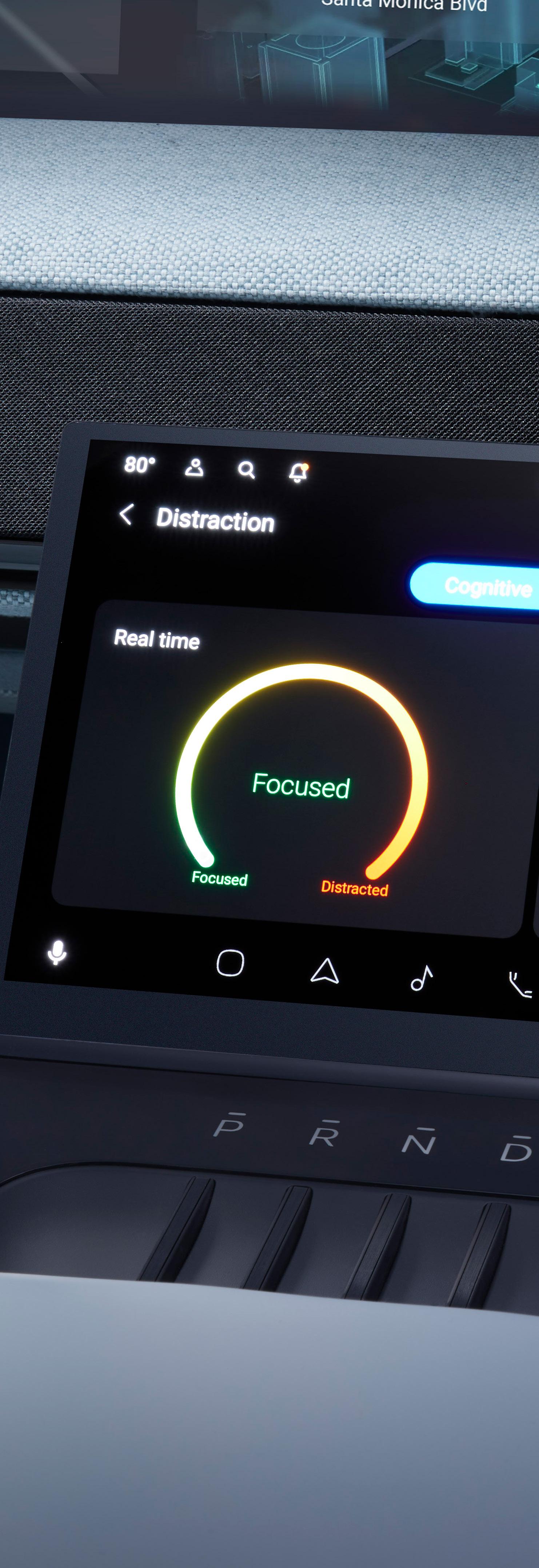
“Consumers are looking for cars that integrate with their digital lives and offer meaningful experiences while being intuitive to use and engage with. Car makers will need to differentiate themselves by delivering consumer-focused in-cabin experiences that are updated at a pace akin to that of the consumer electronics industry,” says Armin Prommersberger, Senior Vice
Presidentof Product Management, HARMAN International.
“At HARMAN, we call this ‘Consumer Experiences. Automotive Grade.’ and it is the very area in which we specialise. Through our key consumer and technology brands, and our deep industry expertise, HARMAN is delivering road-ready automotive innovations that can be deployed and make a meaningful impact on consumers today.”
Despite the current level of innovation taking place in the industry, Prommersberger still believes there is a gap to be filled and opportunities to redefine the conventional EV. Much of the future developments in the industry will be focused on technology, connectivity, and the convenience and safety of the driving experience. Electrification and digitalisation is a universal move that, if not adopted, would leave businesses in history within the next decade.
However, each carmaker can influence the industry, likely making it more volatile. “No one carmaker or supplier can solve this, nor meet the pace of innovation demanded by today’s or tomorrow’s consumer,” Prommersberger says.
“Traditional suppliers don’t have the technological expertise, while big tech falls short on delivering effective innovation that can withstand the rigour of the automotive space.”


“BIG TECH FALLS SHORT ON DELIVERING EFFECTIVE INNOVATION THAT CAN WITHSTAND THE RIGOUR OF THE AUTOMOTIVE SPACE”
ARMIN PROMM ERSBERGER, SENIOR VICE PRESIDENT OF PRODUCT M ANAGEMENT, HARMAN INT ERNATIONAL

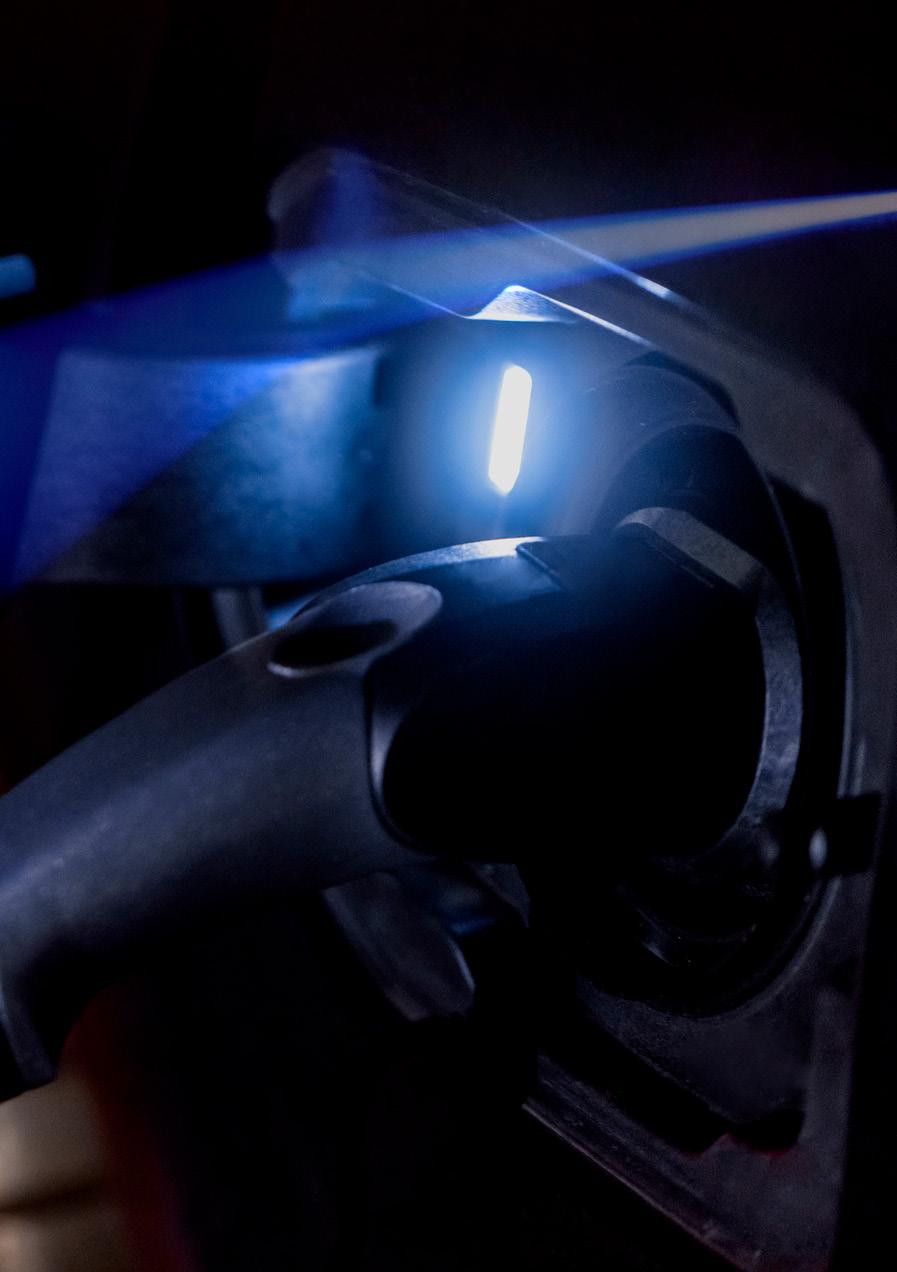
Many consumers are still uncertain about EV adoption, but what if buying or leasing a new car could benefit them financially and sustainably in the future?
The charging landscape is, ironically, a minefield. The attempt to cater to the majority of drivers is currently being directed by a traditional approach to car ownership—stopping to charge when needed, as opposed to powering their vehicles preemptively.
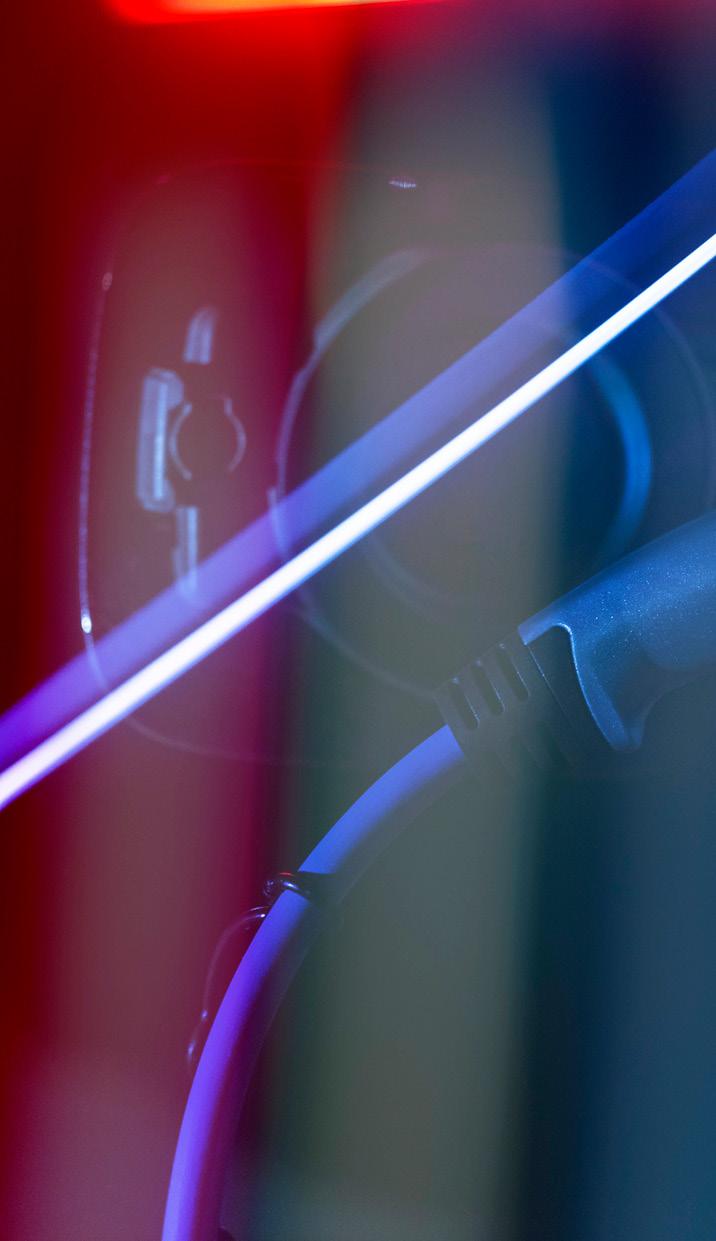
Residential charging solutions were some of the first to be adopted by drivers and still hold a valuable position in electrification, but many consumers are still not content enough to justify buying or leasing an EV.
So, why is residential charging not enough for drivers? Perhaps it has something to do with a change in perspective from the traditional ICE owners to EV users.
“Residential charging is, for most EV drivers, the starting point. If you have a typical drive cycle that is sufficient for the majority of your needs, it always depends on what your living situation is,” says Rombout Heesterman, Lead Product Manager at EVBox. “If you own a driveway or the capability and still install in your vicinity, that's ideal. Then, transitioning to an electric car is rather straightforward.
“On the other hand, if you own a car, you want to have freedom. You want to be able to go anywhere you would like. You need forms of charging along the route or at your destination.”
Originating from a city where sustainable urban mobility is paramount—and, generally, a country that is highly committed to emissions reduction—EVBox is based in Amsterdam, and supplies both own-brand and white-labelled home charging solutions.
Nevertheless, the company’s remit goes way beyond residential: it also provides chargers and the software solutions to support fast-charging applications and commercial settings.


The company is currently responsible for more than 400,000 charging ports worldwide and is driven by environmental, social and governance (ESG) principles. These include planting 220,000 trees and establishing a diverse workforce of 70 different nationalities.
Commercial customers of EVBox include Unilever, Your Parking Space, and the truck manufacturer Scania.
There should be no borders when it comes to electric travel That’s why IONITY operates charging stations along European motorways that are open to electric vehicles of any brand With several charging points at each location With ultra-fast charging stations that recharge your vehicle’s batteries for the next stretch of your journey in the shortest time possible And with electricity generated exclusively from renewable energy sources So, you are not only travelling emission-free: the journey really is carbon-neutral Find out more here: weareonit.biz
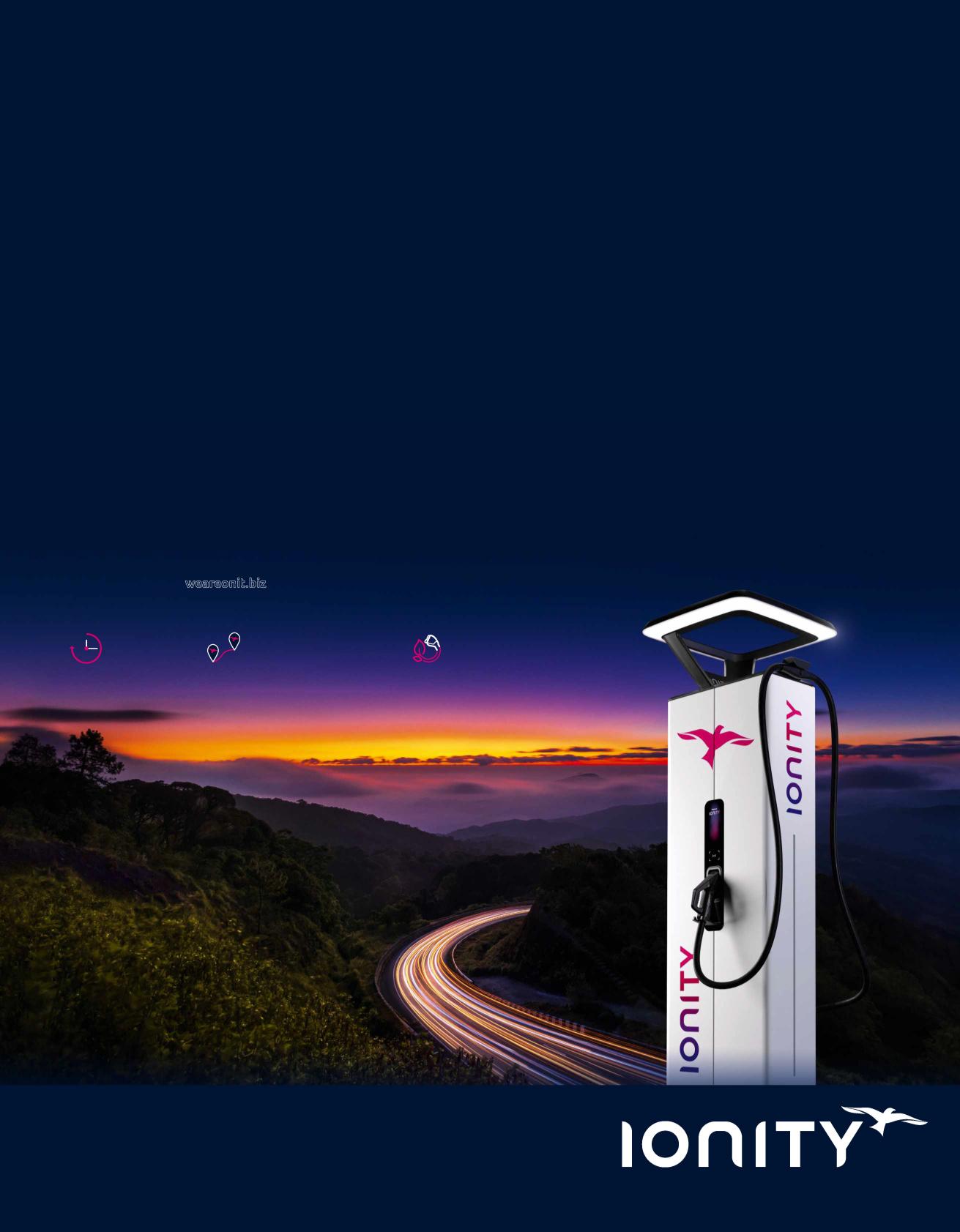
So how can businesses attract more consumers to the notion of electrification and encourage them to charge their cars at home? Though the majority of car trips are within the seven to ten mile range, realistically, it should be a no-brainer, but many consumers are too concentrated on what happens when they flex their freedom by taking their car on holiday or driving for a business-related purpose.
As a result, the key changes we expect to witness will revolve around technology. Charging will become ever-more integrated in both residential homes and the digital ecosystem, allowing users to benefit from the cost-saving aspects and convenience of digital connectivity.

“As this market matures and as the demand for charging—and energy—grows, we are looking for more intelligent solutions to actually ensure that it not only charges the car, but also fits into the energy transition, where we move from a demand-based to a supplybased system where we consume energy when renewable electricity is available.”
For consumers, bi-directional charging effectively means an electrical current can be passed between their home and car via integration into their home grid. As demonstrated by Hyundai through its hotel concept, EVs are capable of reversing energy transfer from their batteries to power other components and systems, such as scooters, other cars, homes, and more.
“From the concept phase, this has already been on the radar since the inception of
“IT’S INTERESTING TO SEE THAT MORE CAR MANUFACTURERS ARE BRINGING SOLUTIONS TO MARKET, WHICH OFFER A FORM OF BI-DIRECTIONAL”
ROMBOUT H EESTERMAN, LEAD PRODUCT MANA GER, EVBOX
Bi-directional charging, also known as vehicleto-grid (V2G) charging, refers to the ability of an EV to charge its battery from the grid, but also to revert power back to the grid from its own battery. This turns an EV into a source of distributed energy storage.

One of the main benefits of bi-directional EV charging is that it enables valuable grid services, such as frequency regulation and peak shaving, helping reduce the cost of operating the grid.
It can also help to reduce the need for expensive and polluting power plants, instead switching to more renewable sources of energy. Selling back the energy stored in the car to the grid network during peak hours also provides EV drivers with the ability to make money on their energy.

electric cars, and the promise is there. Right now, it’s interesting to see that more car manufacturers are bringing solutions to market that offer a form of bi-directional. That could be within their own ecosystem, for example, as an actual domestic plug that connects to the outlet of your EV so you can charge some camping gear or larger appliances.”

Bi-directional shows its benefits when used in a digital setting and, supported by AI, it can allow homeowners to better manage their entire energy consumption by creating a micro-grid.
Thinking back on perspective, the reality of EVs is somewhat skewed by the traditions of ICE vehicles. Most consumers are yet to reap the financial, sustainable, and social benefits of electrification. Really, most customers must try the whole experience for themselves, from driving to home charging, to really gauge the shift that needs to be made to support a more sustainable approach to transportation.
“AS THIS MARKET MATURES AND AS THE DEMAND FOR CHARGING, AND ENERGY, GROWS, WE ARE LOOKING FOR MORE INTELLIGENT SOLUTIONS”
ROMBOUT H EESTERMAN, LEAD PRODUCT MANA GER, EVBOX

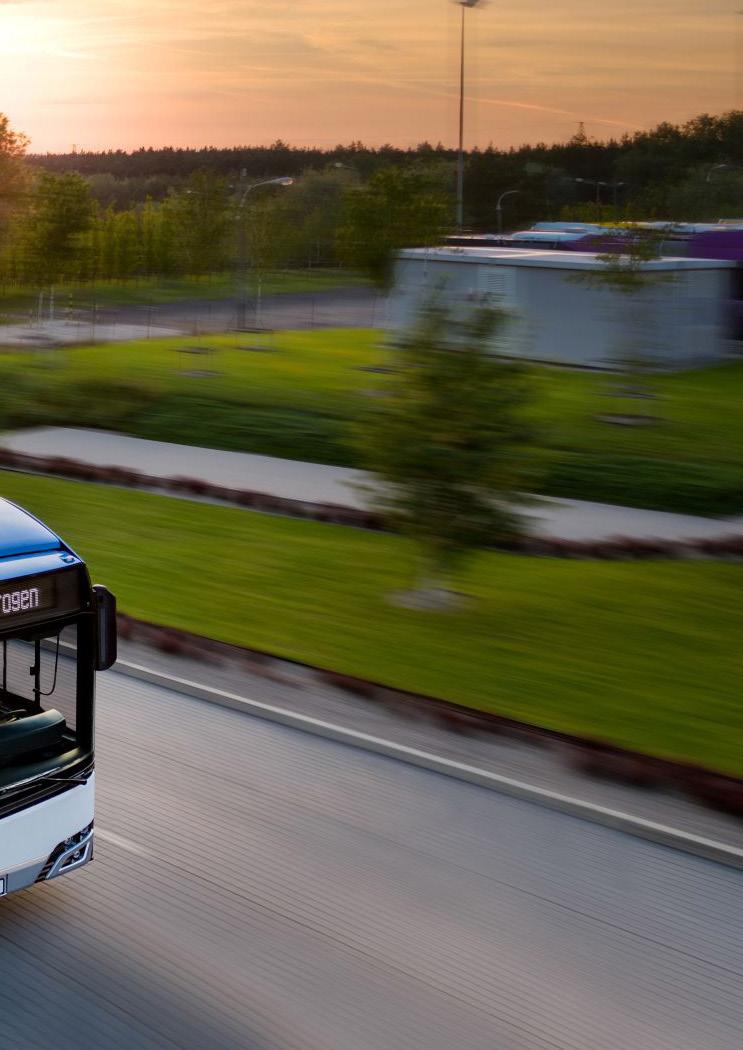
Passenger transport is evolving rapidly, but electrification of public mobility services requires an ‘infrastructure first’ approach with routes in mind
The world is going urban. City hubs are having to cater for larger populations and expand their reach when it comes to public transportation. In the same breath, authorities are also battling with the inevitable challenge of electrification.
Public service providers are experiencing different pressures to those of passenger cars, but at the same time have different requirements to meet.
Over the years, public transport has undergone its own transformation, which, much like passenger cars, began with hybridelectric vehicles (HEVs). As of March 2022, there were around 3,854 hybrid-electric buses in the UK alone, plus 785 of their allelectric counterparts.

In September 2022, the World Resources Institute recorded the growth of electrified buses in the US, which, between March and September, saw growth of roughly 500 buses—to reach a total of 12,720.
Despite such figures, there is still a significant amount of change to take place for authorities to make an impact on climate change.
When looking at the topic of e-buses, it’s best to take insight from the industry itself— in particular, from Arriva’s Zero-Emissions Institute. Its Director, Matt Greener, explains how bus network transformation is a key priority for public transport authorities.
“We cannot rely on any single solution for decarbonisation,” says Greener. “Instead, we will need to establish the right technology for each of the countries and regions we serve based on our clients’ objectives, operational requirements, energy grid capacity, and alternative biofuel availability.”
As the Director of Arriva Group’s Zero-Emission Institute, Matt Greener is responsible for setting the direction of Arriva’s strategic approach to delivering zero-emission bus fleets to support clients in achieving their decarbonisation and air quality target.
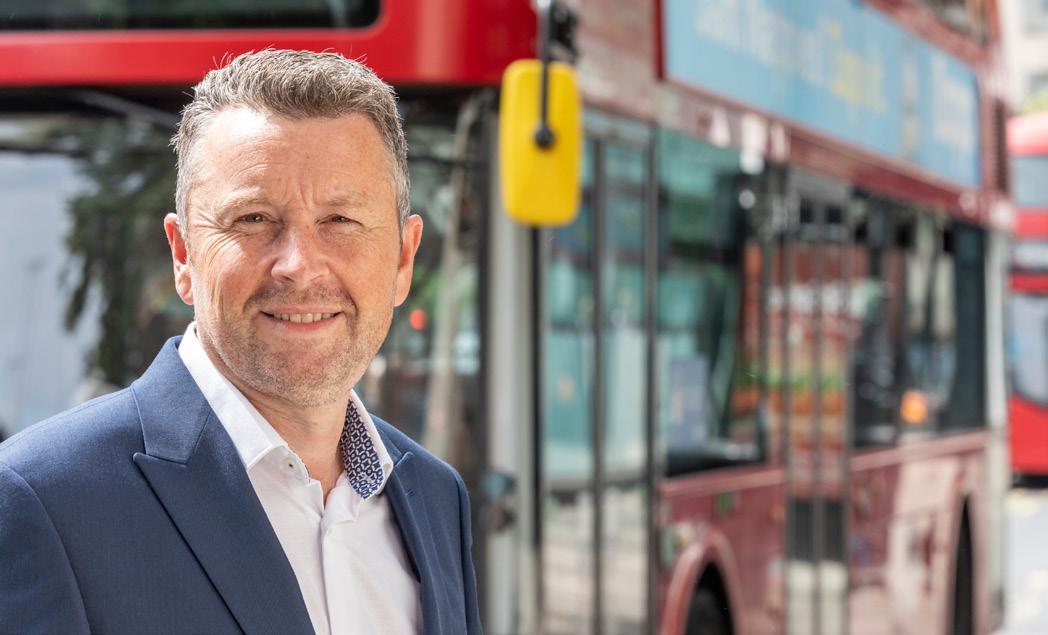
Before joining Arriva, he held a number of senior roles within the transport sector. These primarily focused on fleet procurement strategies, fleet optimisation, utilisation, and lifecycle management analysis to drive improved business performance.


What sets apart public transport from private car usage is decided by infrastructure. Home charging solutions catalysed the shift from internal combustion engine (ICE) vehicles to electric vehicles (EVs), bus networks require more foresight: the source of their energy supply.
“When planning to upgrade an entire depot to service an electric fleet of buses, the clean energy supply must first be secured and grid


connection established, while also planning and mapping how to retrofit sometimes ageing infrastructure with the right type of charging solutions,” says Greener.
“This is far more complex than a domestic vehicle, which can be fuelled by available capacity supplied from within the home.”
The demand for electrified services resulted in Arriva’s Zero-Emission Institute. It supports the transport company with processes that actively engage with the distribution network operator as a critical practice to secure grid capacity, identifying the costs incurred by sustainable power supply to charging sites.
“WE HAVE SEEN THE EMERGENCE OF MORE INDIVIDUAL AND TAILOR-MADE TRANSPORT SOLUTIONS, COMBINED WITH ACTIVE TRAVEL”
MAT T GREENER, DIRECTOR, AR RIVA GROUP ZERO-EMISSION INSTITUTE
“Once the grid connection is made, significant investment is still needed at the depot or roadside—where opportunity charging is a viable option—to install the charging system required for the bus fleet,” says Greener.
‘Opportunity charging’ is a term that we’ve not heard much in the EV sector, yet it’s a key principle of warehouse operations and other vehicular processes that has loosely been carried over to the transport sector. The term is perhaps the best way to explain the placement of public charging stations at spaces like gyms and supermarkets, as well as being leveraged for dedicated electric forecourts.
From a public perspective, opportunity charging could be the key to allowing cities to electrify on a large scale, but, for these services, must be in place before areas can be switched. The solution must also work handin-hand with route planning to ensure that trips are efficient while also carrying the most individuals within suitable timeframes.

“When it comes to journey planning, it’s safe to say that the majority of domestic cars have relatively short distances to travel on a daily basis, and time in-between journeys for potential charging. Selecting the right car for domestic use is therefore a simple calculation,” says Greener.
“Bus operations are entirely different, requiring careful planning and flexibility. Choosing the right bus, with the right battery capacity to complete the daily operational cycle, is a complex calculation—especially when one factors in how batteries degrade over time, and bus operators typically keep their vehicles in service for between 12 and 15 years.”
“CHOOSING THE RIGHT BUS WITH THE RIGHT BATTERY CAPACITY TO COMPLETE THE DAILY OPERATIONAL CYCLE IS A COMPLEX CALCULATION”
MAT T GREENER, DIRECTOR, AR RIVA GROUP ZERO-EMISSION INSTITUTE
The idea of a universal solution is impossible, with each city susceptible to different constraints. A solution used in a highlydeveloped city like London or Singapore can’t be used as drag-and-drop systems for other areas of the world that lag behind in the race to electrification (and, of course, nobody is advocating sustainability as a game).
Service-based mobility is expected to have an overwhelming impact on cities and their sustainability impacts during years to come, but partnership among organisations will be critical in achieving localised goals.
“We have seen the emergence of more individual and tailor-made transport solutions, combined with active travel,
which all link into traditional forms of public transport,” Greener says.
“Demand responsive transport (DRT) and micro-mobility solutions, such as e-scooters, have become increasingly popular, providing more flexible transport options. Active travel, such as walking and cycling, has also grown, with many transport authorities increasing the number of dedicated routes for active travel.”
As a result of this, mobility-as-a-service (MaaS)—a solution for which Arriva is at the forefront—is being adopted globally, bringing mobility into the digital ecosystem via appbased services.
These applications are becoming more intuitive and enabling insights that appeal to the eco-conscious traveller, including journey times, emissions, prices, and availability.
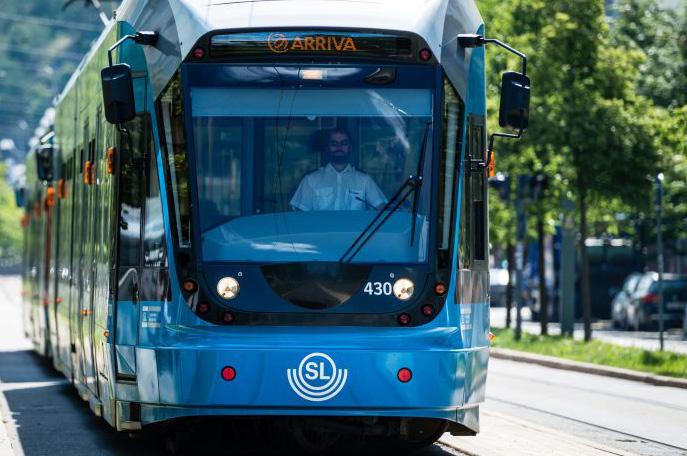

HUMAN-POWERED COUNTERPARTS?
HUMAN-POWERED COUNTERPARTS?

Lyft
Electric bikes (e-bikes) are gaining popularity across the globe for both private and public use. App-based mobility-as-a-service (MaaS) models are shaping the way that commuters get to work and bike shops are all now equipped with e-bikes—though granted at much higher price points than conventional bikes.
In 2020, it was estimated that e-bike industry sales would grow from around 3.7 million globally to a total of 17 million per year by 2030. We’re already seeing this trend come to fruition, particularly since consumers have been given a taste of electric micro-mobility solutions through shared mobility platforms. In fact, throughout many cities, e-bikes are the delivery riders’ transport of choice when it comes to companies like Uber Eats, Deliveroo, and JustEat.
Taking a somewhat provocative approach to this conversation—the use of both bikes and e-bikes—we probed players in the industry on the topic to find out what the future holds for pedal-driven bikes.
The Co-Founder and Chief Technology Officer at Cowboy.com, an e-bike company selling minimalistic bikes and championing a circular product life cycle, Tanguy Goretti (TG), shares his thoughts on the topic. Joining him is Laura Fox (LF), General Manager, Citi Bike, at Lyft Bikes and
Providing everything you would need from an e-bike, Cowboy.com aims to be the champion of two-wheeled endeavours. The company offers a range of electrified bikes that come with two-year warranty, in-app customer service, over-the-air updates and diagnostics, and ‘Find My Bike’ position tracking.
The Cowboy aligns itself with the evolution of the EV industry, particularly when it comes to connectivity and user experience. Its app-based service shows just how advanced bikes are as micro-mobility solutions.

Customer Reviews:
“The Cowboy 4 has been amazing so far! Build quality is super high and the rides are very smooth. I’ve been recommending it to all my friends.”
“It does the job! The bike is easy to use as it should be… Just jump on it and go.”
“I really love my Cowboy, it really changed the way I move in the city.”
An in-depth, roundtable conversation on the pros and cons of e-bikes, whether bought from Cowboy.com or used in share mobility settings as provided by
Scooters, sharing insights about the growing bike share market and overall adoption of e-bikes as a sustainable solution for future urban mobility.
TG: There will always be a place for bikes— they’re part of our culture, and, for many, they are the first mode of transport we learn to use as a child. Our e-bikes aren’t intended as a replacement for bike; the majority of our customers didn’t previously own a bike, so they’re buying Cowboy to replace a car or public transport and, on average, they’re using that bike eight times a week—it’s their main vehicle.
Our mission is to help riders move in and around their neighbourhoods in a quicker, more convenient, and more enjoyable way than any other mode of urban transportation, and, in doing so, reconnect with their city, spend more time outside, and improve their fitness and mental health.
LF: We think that pedal bikes will continue to be a critical part of the system. Riders prefer to use pedal bikes 40% of the time. There’s still a really big need there and it makes sense for a lot of different use cases.
As we think about the owned-versus-shared market, sometimes there’s a larger thought that ‘shared’ and ‘owned’ are in competition with each other. It’s not the case.


We actually see that for the people who ride citibike—and shared mobility in general—the majority of them do own their own bike, but they’re serving different use cases. If I’m taking a one-way trip or the weather might not be great, or I don’t have a safe and secure place to park my own bike, all of these use cases make taking a shared trip the best option.

TG: Software is integral to the Cowboy experience, and we are always striving to provide riders with the most seamless riding experience possible. We were the first-bike maker to introduce a fully integrated wireless
phone charging dock onto the bike stem— pushing the connected ride experience even further.
We were also the first to offer a navigate-byair quality feature in our app, and the first e-bike to offer iOS 16.1 Live Activity Widgets, providing Cowboy riders with real-time ride data at a glance from the users' lock screen.

“IN THE US, WE’RE SEEING E-BIKE PURCHASES AT TWO TIMES THE LEVEL OF INDIVIDUALLYOWNED CARS”
LAURA FOX, GENERA L MANAGER, CITI BIKE , AT LYFT
LF: Innovation is required in the bike itself, in charging, and there’s also a need for innovation to determine how you bring people onto the platform and retain their excitement for riding. On that first point, we’re focusing on what types of products people love, and those that really stand the test of time. That can really support the reduction of emissions as well as our overall operations—generally creating a great product.
The next thought is ‘how do we continue to improve and make it an even more available product?’ while also continuing to reduce emissions. We’re exploring this with cities across the US, and we’re having conversations with partners globally about charging stations and charging infrastructure, so that when bikes are docked at shared stations, they’re actually charging.
Electrifying just a portion of the network, we can actually reduce the need for battery swaps by 90%, which is really exciting when you think about how shared mobility systems work.
TG: Today, many individuals still don’t believe that an electric bike provides the same fitness benefit as a traditional mechanical bicycle. However, research shows that, when riding an e-bike, exertion is similar when compared to regular bikes, and it’s far more efficient than walking.
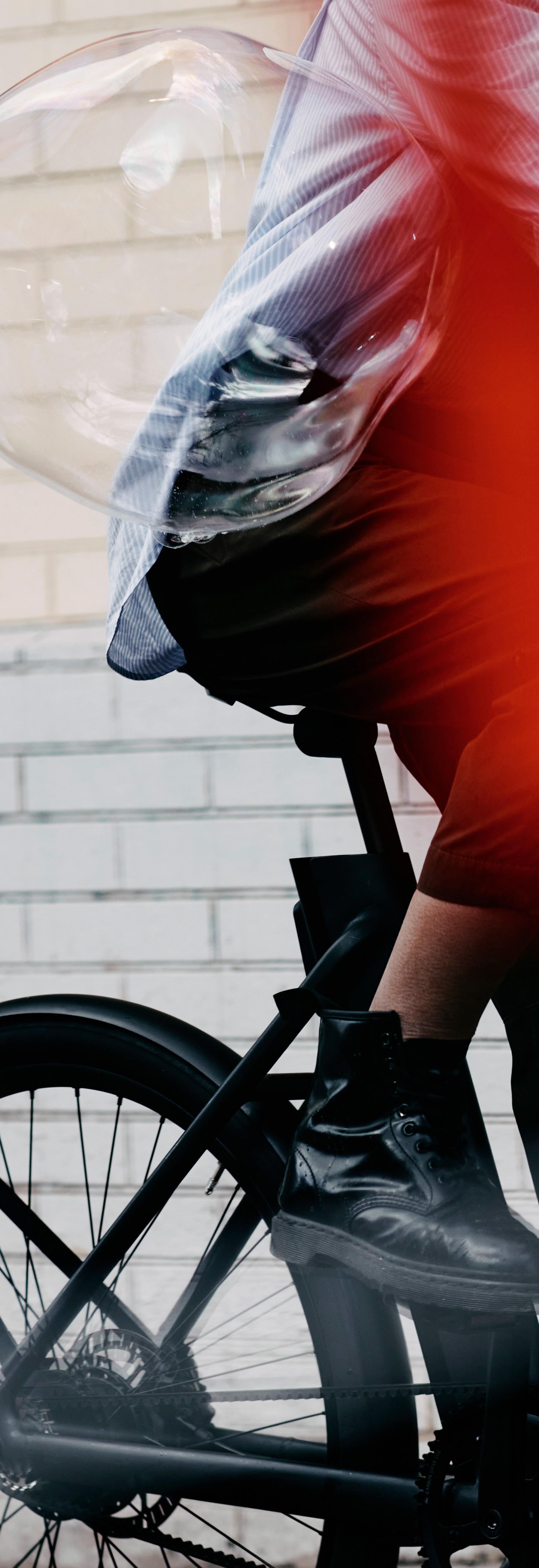
Our own user data shows that 30% of Cowboy riders said they had replaced a petrol-powered car trip with our bike

Following successful rideshare operations, Lyft branched out into the bikeshare space, providing a shared micro-mobility solution to select cities in the US.
The solution plays into the hands of sustainability-conscious commuters as an effortless solution to transport in urban environments. The company’s rideshare service currently reaps high financial rewards, achieving revenue of US$1.05bn in Q3 of 2022.
Lyft’s service is expected to launch in selected areas in the US, including Chicago, Columbus, Denver, Metro DC, Minneapolis, New York, Portland and the Bay Area.
instead. It is estimated that 25% of all car trips are less than a mile, so this shows that e-bike riders are actually moving way more.
LF: There have been a number of studies focused on e-bike riders, and it’s been found that health outcomes actually increase; they get healthier because e-bikes require a bit less energy.
I’ve seen studies that said you use 13% less energy or you’re burning 30% fewer calories, but it’s not like you’re burning zero calories, especially on a pedal-assisted e-bike. You’re still putting in that torque yourself while getting a boost from the bike.

The second thing is that, once people start riding, they love it and want to do more of it. That leads to a longer amount of cycle time. The third piece is that people are loving it so much that, rather than sitting sedentary in a car, they’re using an e-bike to replace car trips—‘70% of car miles have been replaced’ is a stat that I come back to often.



TG: I believe that e-bikes will have their own ‘iPhone moment’, as I like to say. If you look at the last 10 years, two significant hardware developments occurred: electrification and connectivity.

You can look at the iPhone or Tesla as examples—the hardware differences became less relevant while software became the main element, and, soon enough, the e-bike industry will follow suit.
LF: I think there are a number of different trends. One is that, in the US, we’re seeing e-bike purchases at two times the level of individually-owned cars, which is incredibly exciting given there are lots of incentives to buy a car.
We see increased rates of household e-bike ownership in countries like Germany, particularly in the mid-teens. We’re also going through a whole conversation globally around the cost of lithium-ion battery packs and cell packs, and how many e-bikes you could get for the average battery unit of a passenger EV.
“WHAT HAS BEEN FOUND IS THAT HEALTH OUTCOMES ACTUALLY INCREASE”
LAURA FOX, GENERA L MANAGER, CITI BIKE , AT LYFT
These cities are leading the way in providing reliable, sustainable urban mobility networks that support the health and lifestyles of their populations


A home to sustainable innovation, Zurich is praised for its efforts to not only electrify its public transport network in the city, but also around it. The city is home to critical research and development efforts to create clean, sustainable battery solutions to uphold the public transport system and other EVs.
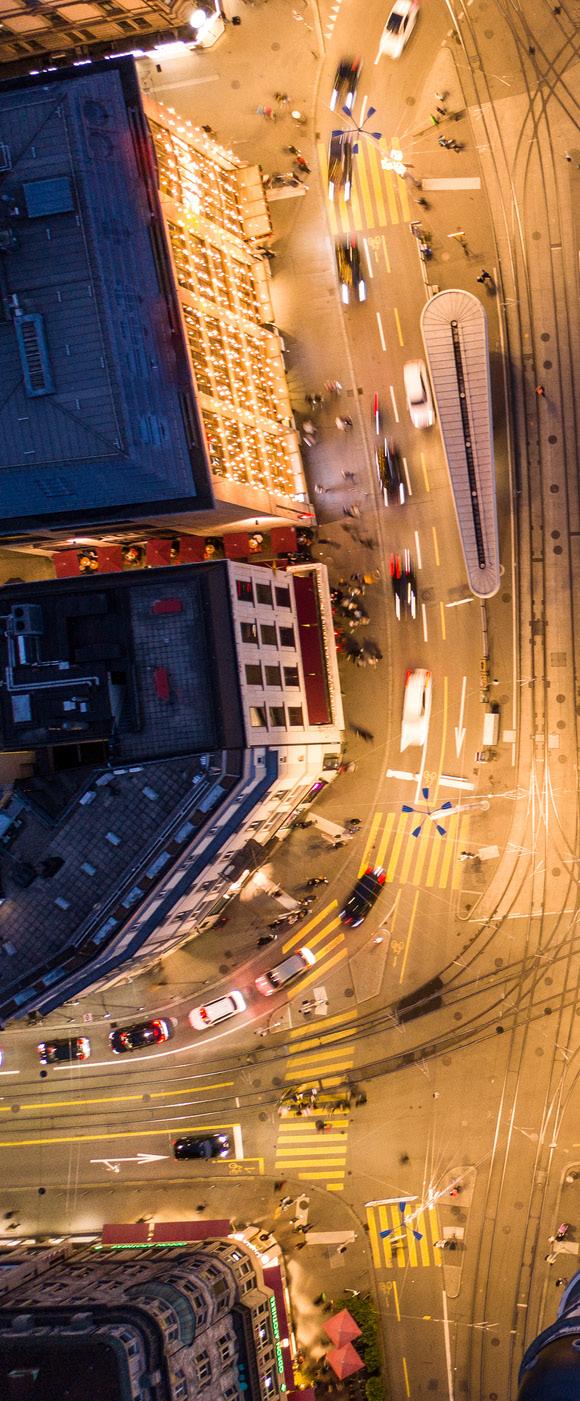
Entrepreneurs at Swiss Clean Battery will be pivotal in this process as they work to produce a solid-state battery that could bring higher performance capabilities to the industry.


The city modelled its public transport network on that of New York City, but has leveraged the country’s technological capabilities and leading position in e-mobility. One of the main differences to its electrified network is its ability to support a significantly larger population.
As one of the most populous cities on the planet, the public transport system is used by more than two billion people every year, which further exacerbates the need for the city to adopt more sustainable solutions.


The ‘City of Gold’ is also becoming the city of sustainable initiatives. Dubai has been investing heavily in sustainability operations, which include the city’s metro line, buses and tram systems. More than an equivalent US$27bn has been set aside over the years to enhance its electrified infrastructure to support the commercial hub.
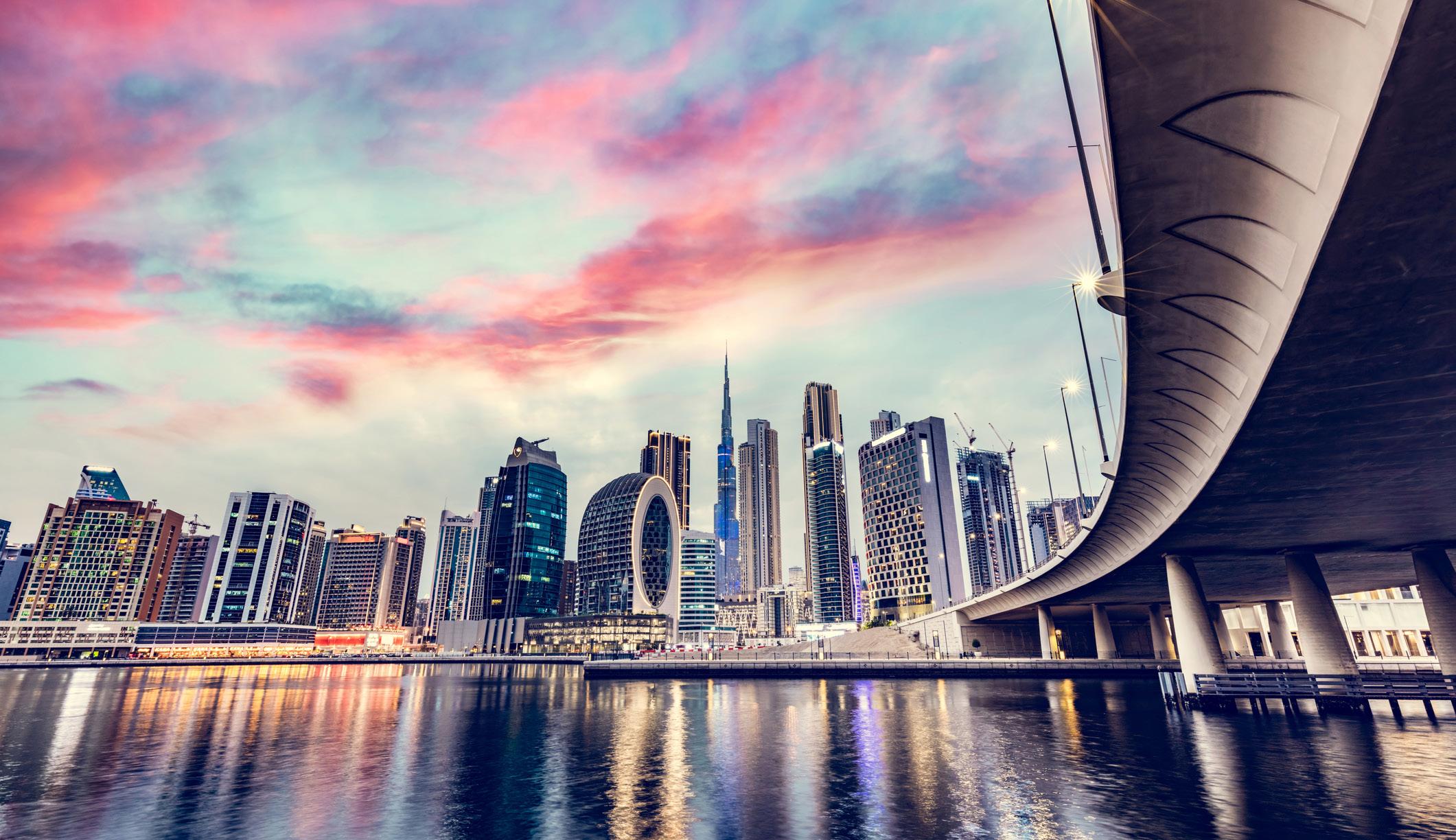
From 2021 to March 2022, the first e-bus pilot began, leveraging ABB overhead charging solutions to assess the feasibility of the technology.
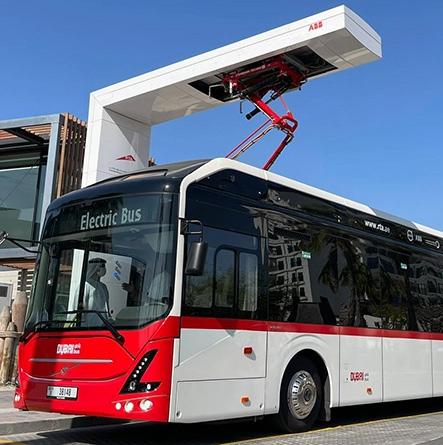
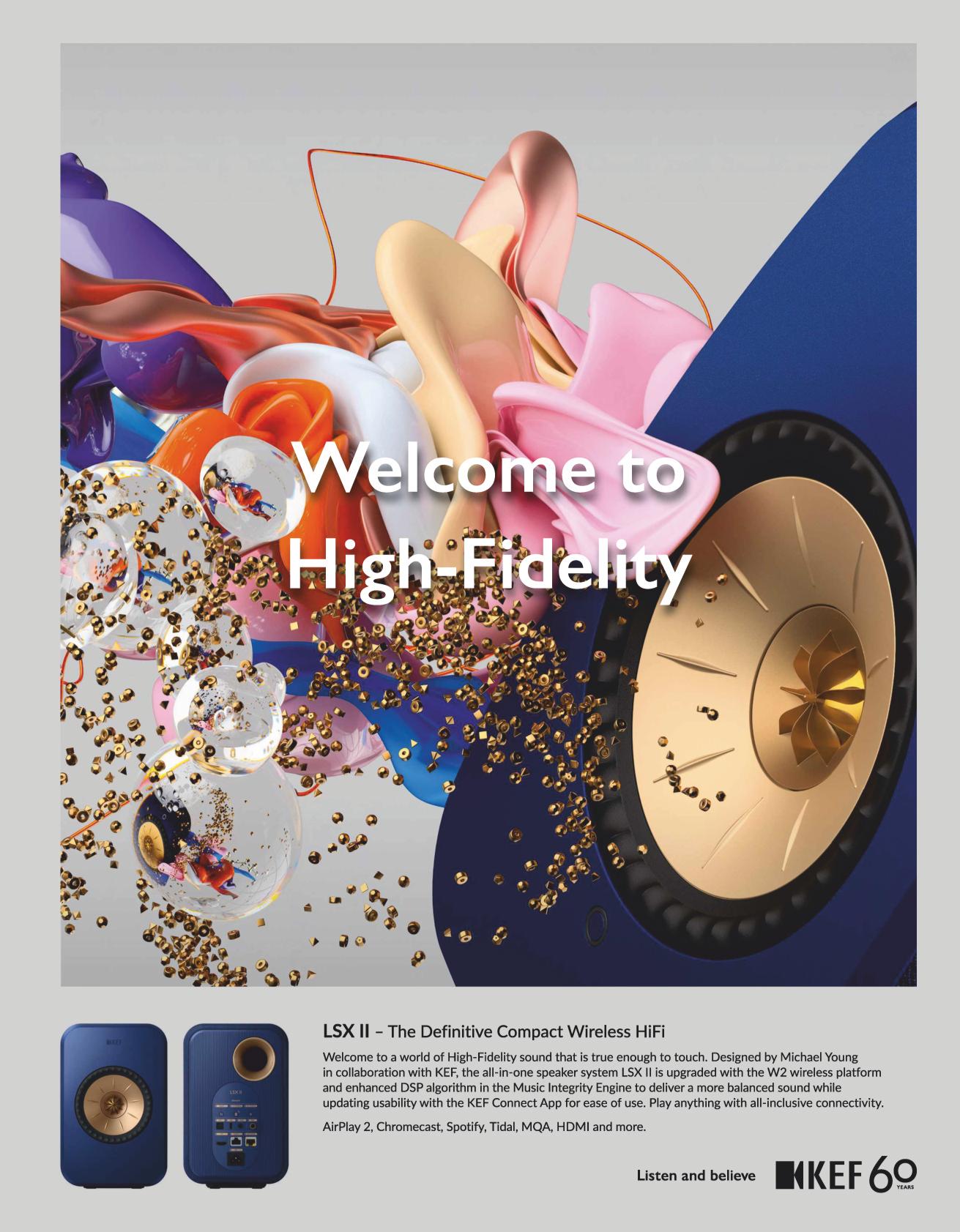

Supporting more than 3.5 billion passengers annually, Tokyo has been blessed with the title of the world’s most extensive urban rail network. The railway serves around 80% of the working population who travel to and around the city—where the majority of jobs are situated.

While a very punctual service, Tokyo’s public transport network is prone to delays during rush hour, though the use of overhead power supplies makes the city far less dependent on automobiles and other fossil-fuel-powered vehicles.

Chicago’s public transport network is the second largest in the US, after New York’s. According to McKinsey, the city’s connections are the best in the country and are very affordable, thanks to retained prices over the past ten years.
In 2018, Chicago became home to the electrified commuter rail, which is operated by Metra and is an important link between downtown Chicago and the city’s southern suburbs.
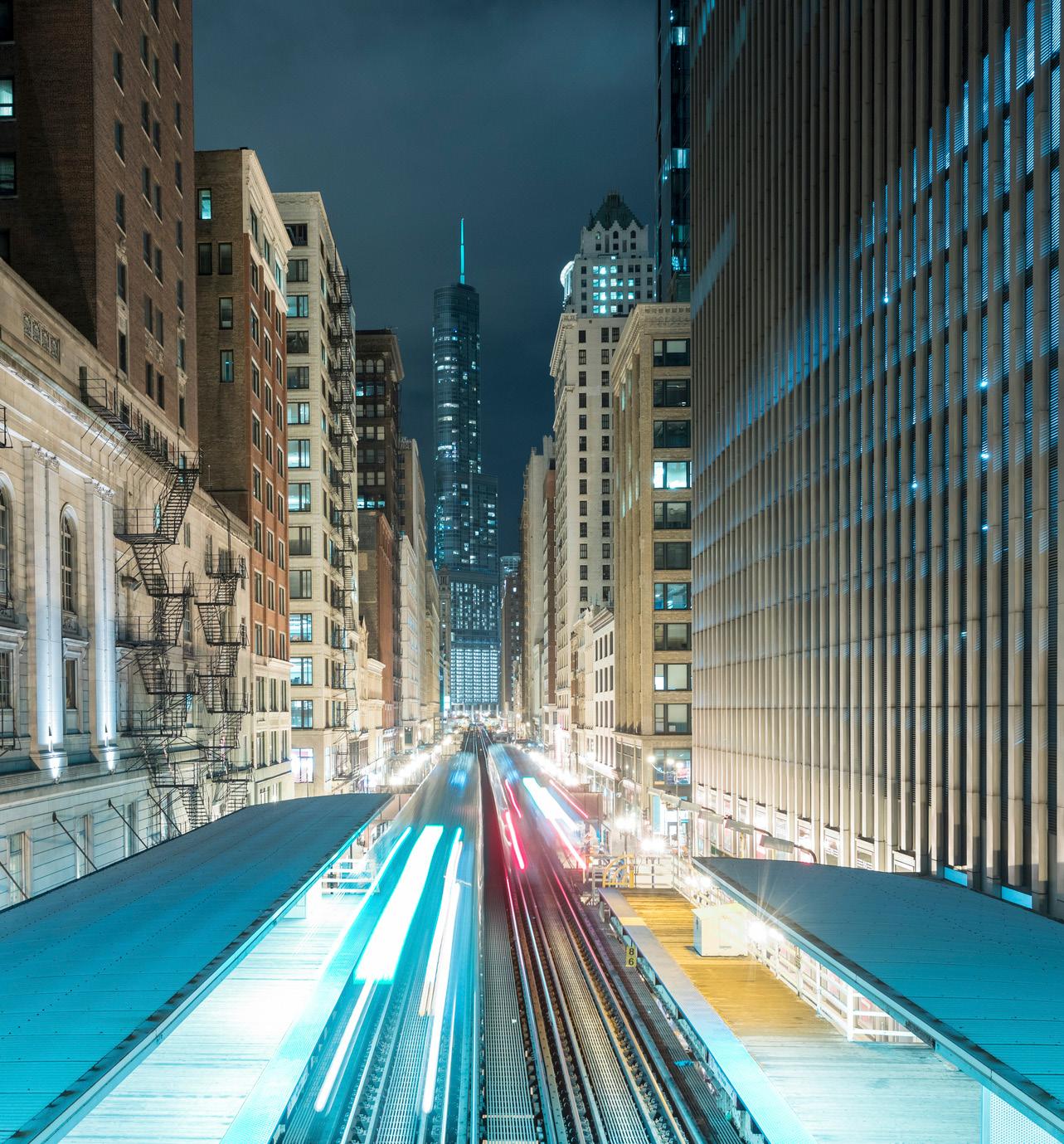

Sporting a metro line and now advancing its efforts to roll out e-buses—alongside others powered by compressed natural gas (CNG) and hydrogen—Madrid is also committed to quality transport services.


As a result, the majority of Madrid's population— around 89%—live within 1km of a station with connections to all major areas of the city.
EMT announced in January 2023 that it had switched off its final diesel-powered bus for the last time, making way for new, sustainable solutions.
The city sports some of the most critical transport links in Europe, most notably, the Eurostar e320—known as British Rail Class 374. An electrified train service, it allows under-sea mobility for those travelling to and from London, with destinations such as Belgium also included
The Greater Paris region is on a clean transport transformation journey, with the adoption of e-buses and charging infrastructure in the works. Transdev, a France-based public transport firm, looks to adopt and optimise 100% e-buses with autonomous capabilities.



In June 2022, authorities approved the trial of Hong Kong’s first-ever electrified double-decker bus, marking a major step for electrification in the already well-connected city. Hong Kong’s metro network ensures public transport within 1km of a station for 75%s of its population.
Despite rush hour and other busy periods increasing demand, the metro network receives an on-time rate of 99.9%, making it one of the most reliable systems in the world.

The satisfaction rate is high across the population of London, who are supported in their daily lives by its extensive transport network. Connections in and around the city have expanded over the years, with both over and underground networks supporting the majority of its population.
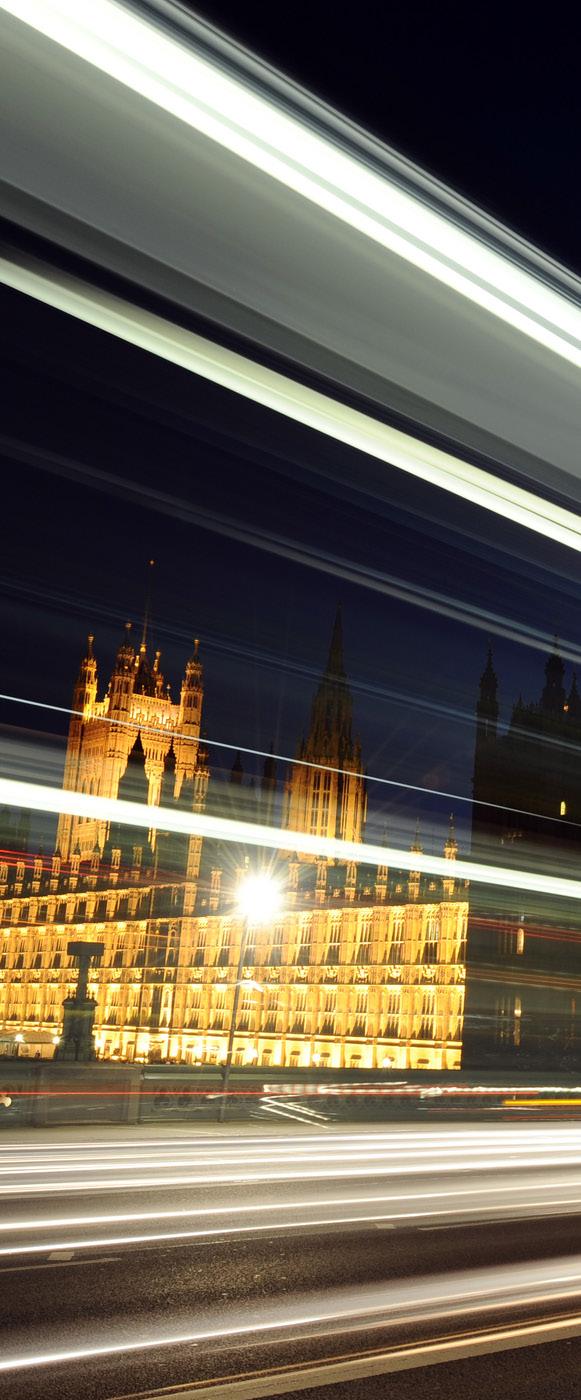
The city is home to great initiatives to eliminate emissions, including the ultra-low emissions zones (ULEZ)—about which there have been talks of extending.
Taxi services are also being influenced to make the switch to electric, as are public buses, which are pivotal in driving down the city’s carbon footprint. More than 800 zeroemission buses operate in the Transport for London fleet, including both single and double-decker buses, resulting in adherence to its ULEZ zones and a 90% reduction in nitrogen oxide emissions.


Emissions reached their highest in the city-state in 2016, at around 7.7 million tonnes of carbon dioxide equivalent (MtCO2e), which was faster than climate calculations predicted. As a result, the Singapore government is working tirelessly to reduce the emissions from its public transport network.

Singapore is working to electrify its public transport network by introducing more electric buses and trains, and has already rolled out overhead charging solutions. The government set a target to phase out all diesel buses by 2040 and has already begun launching its electric bus initiative across several transport routes.
There is also further work taking place in the city to expand the electric train network. In this vein, all plans set out by the Land Transport Authority adhere to the target of fully-electric trains on North-South and East-West lines by 2030.


